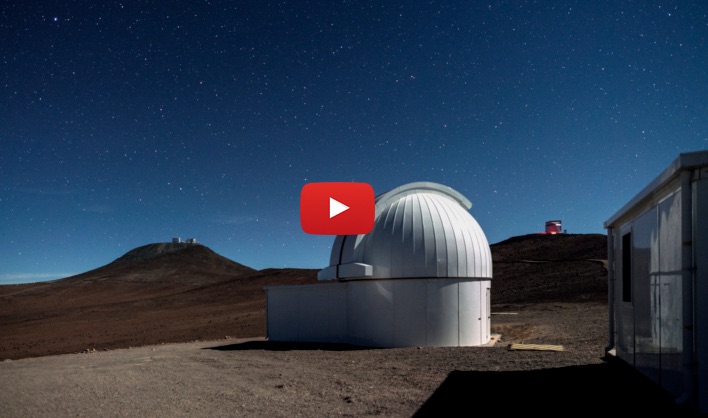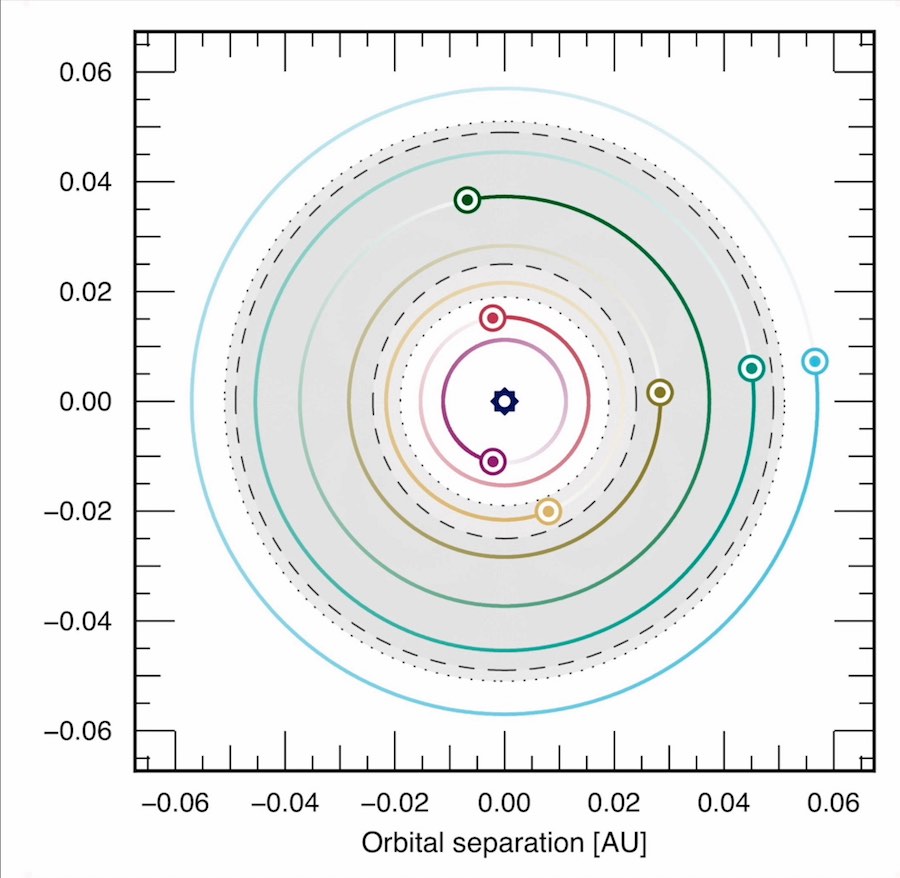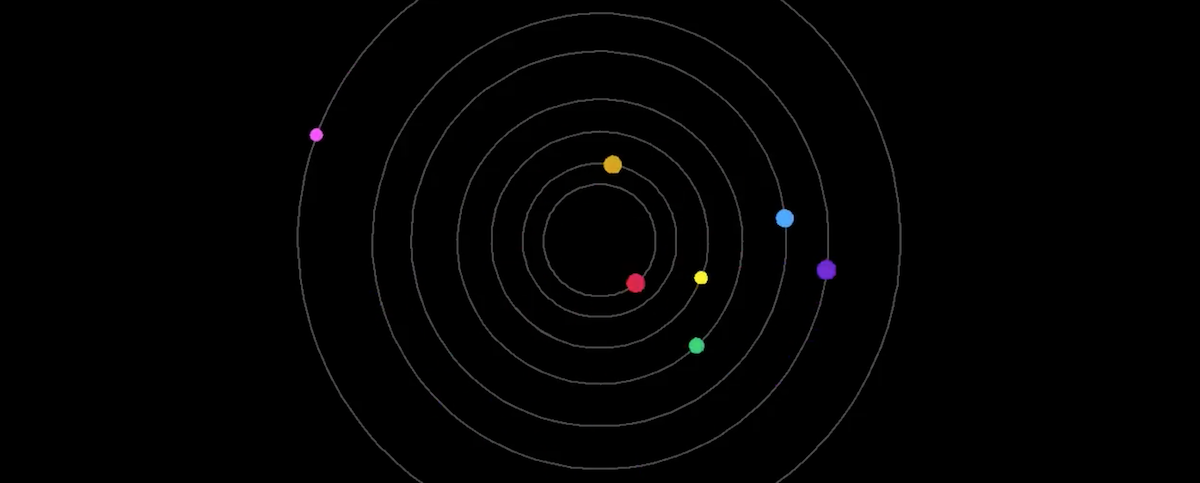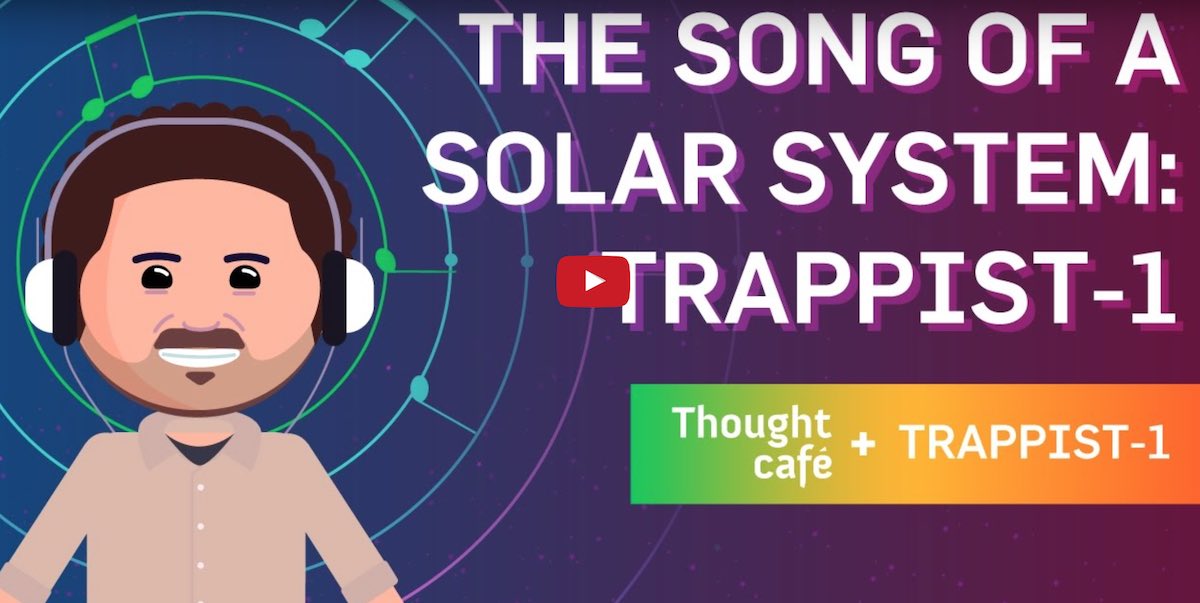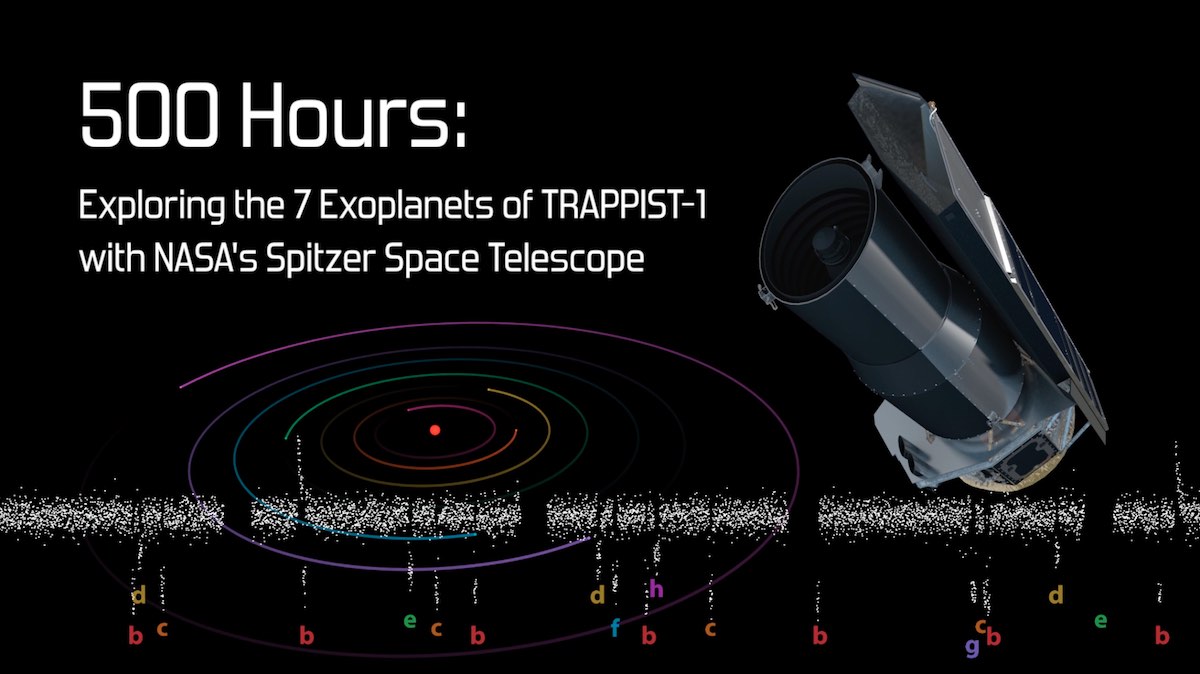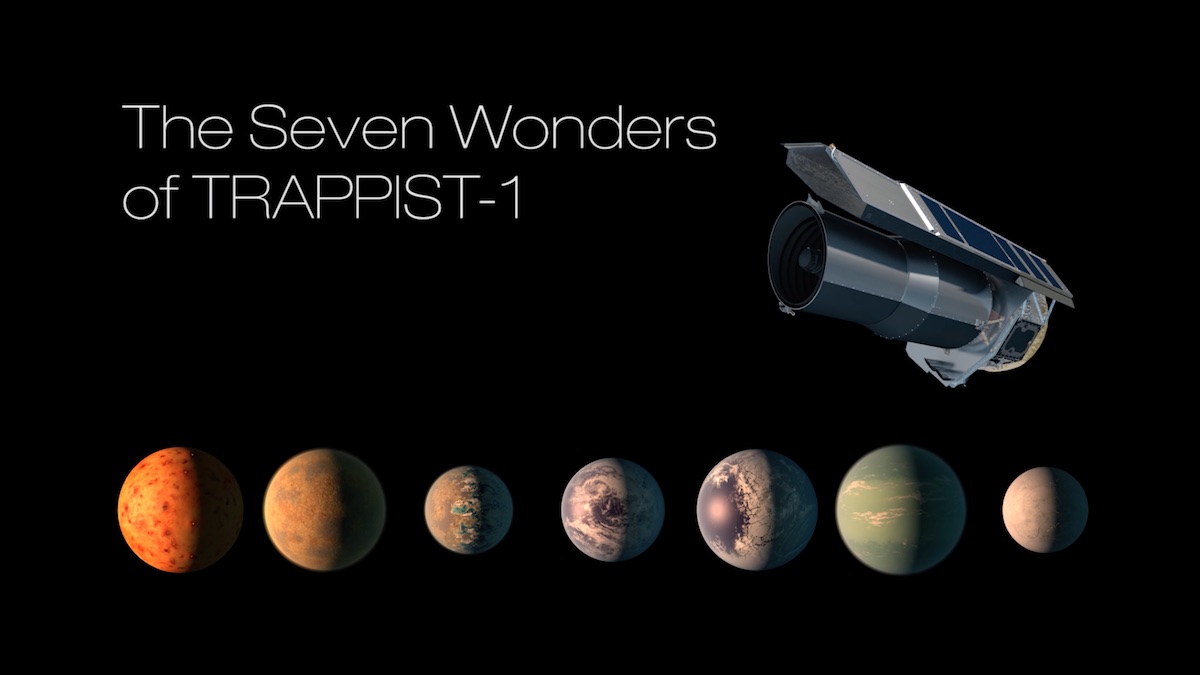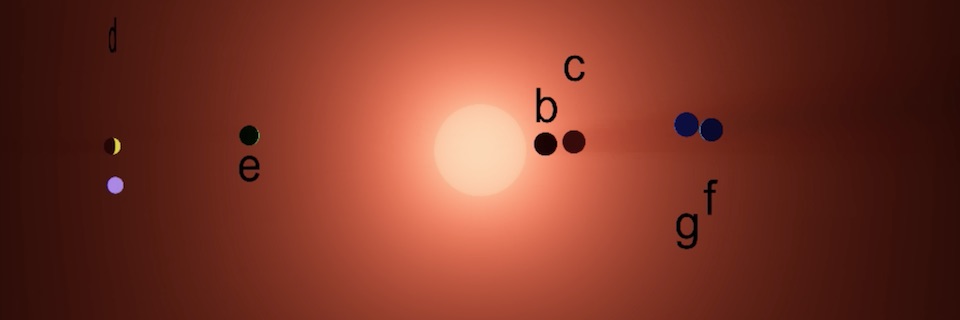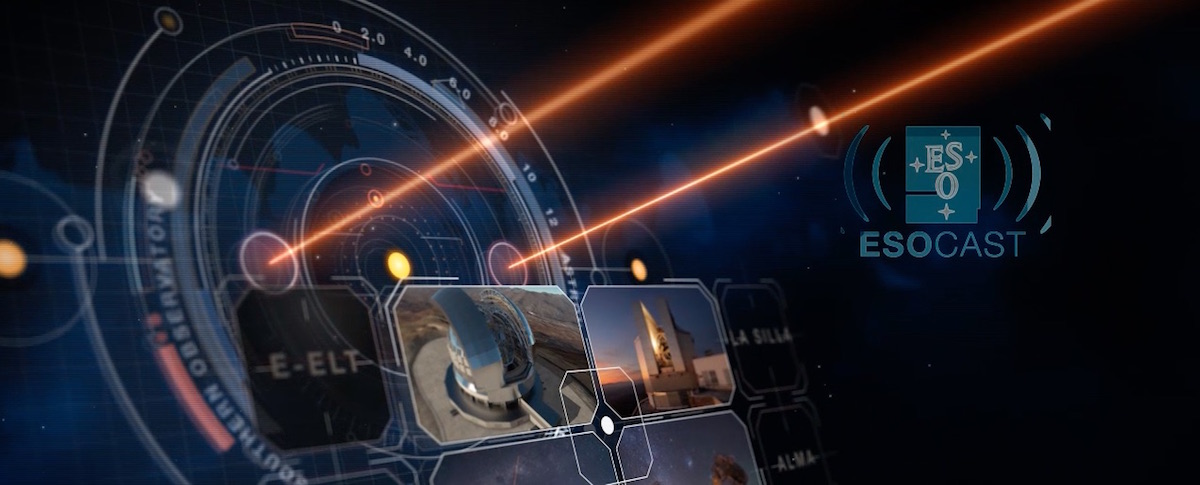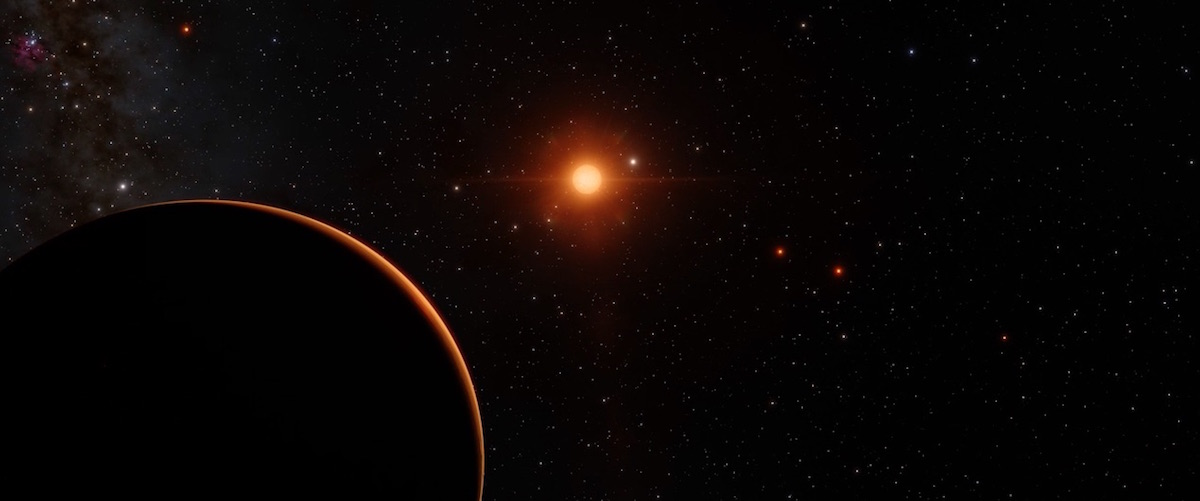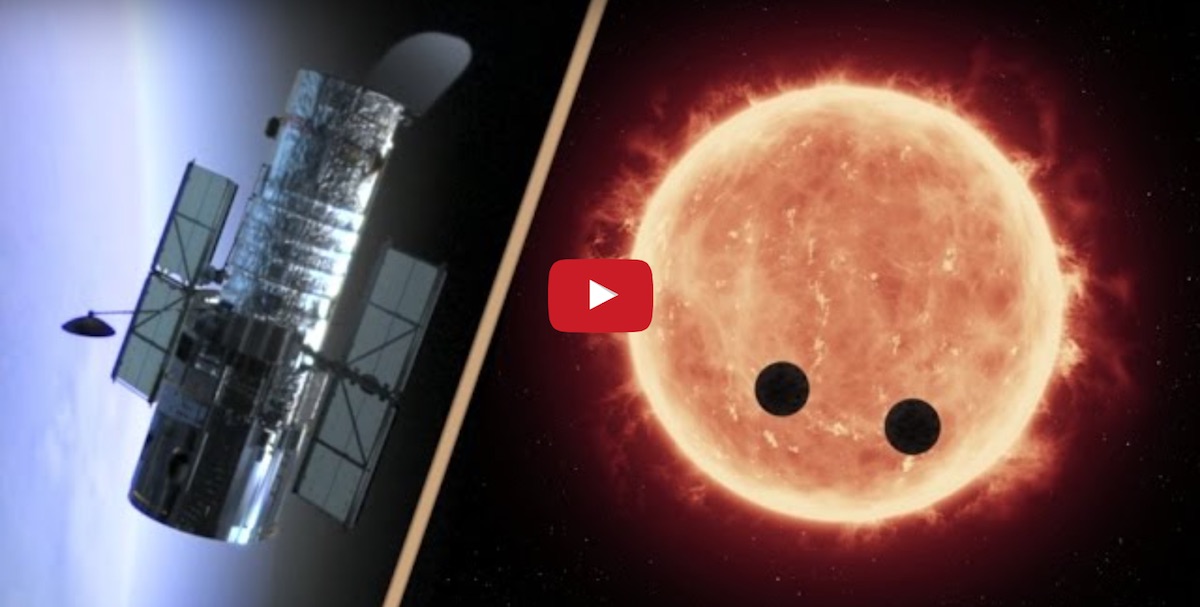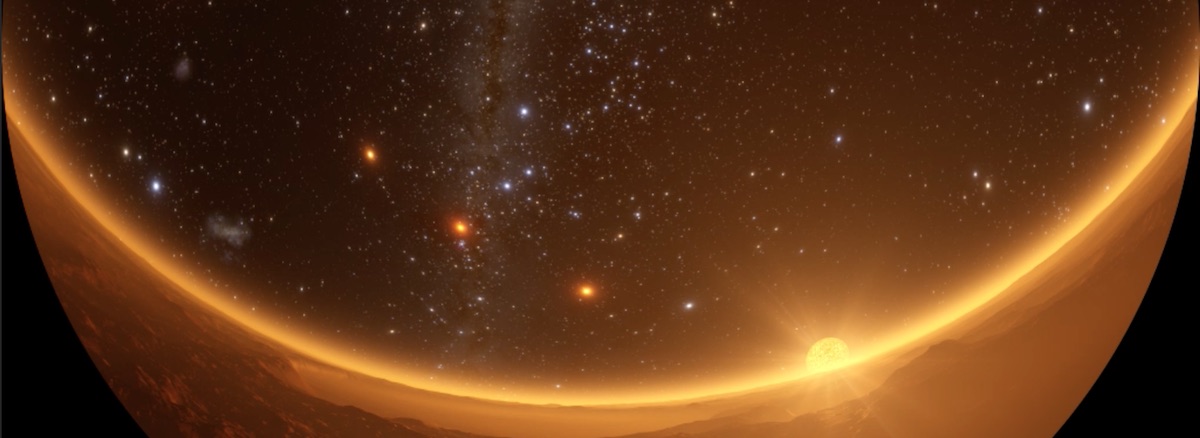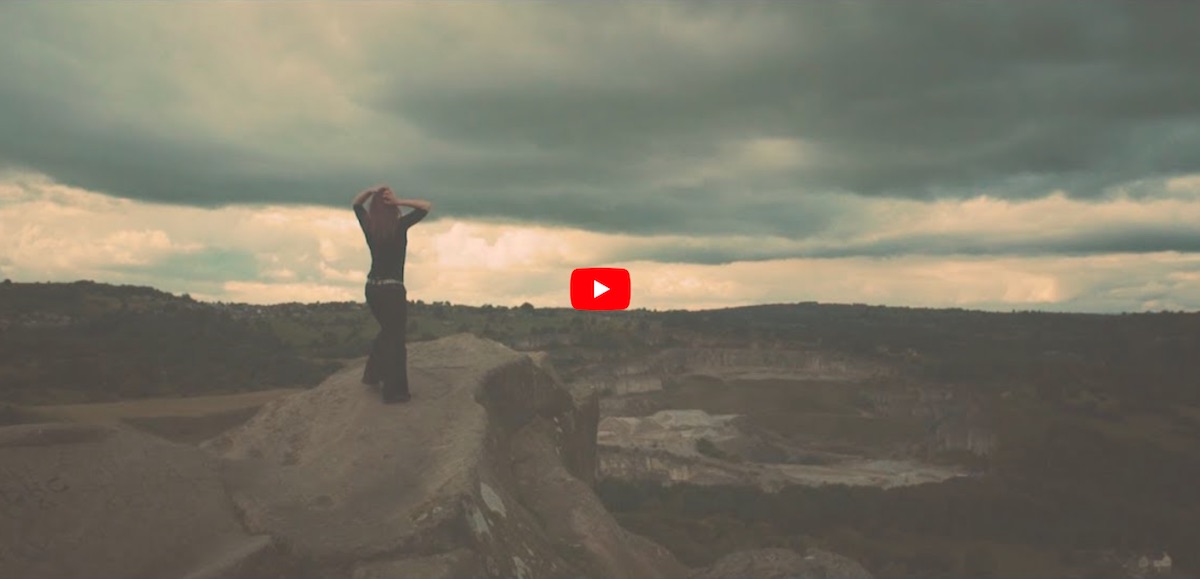About TRAPPIST-1
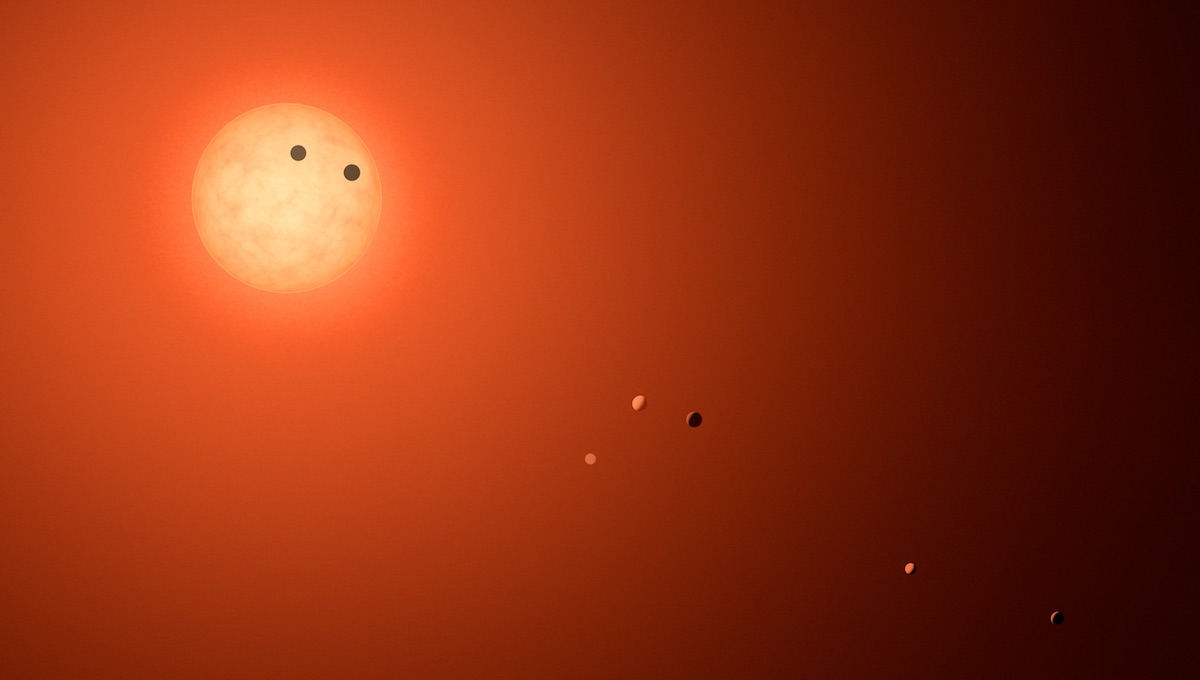
TRAPPIST-1 is a planetary system, located 12 parsecs away from the Solar system (39 light years),
near the ecliptic, within the constellation of Aquarius.
Around a star which is 12 times less massive than the Sun and only slightly larger
than Jupiter, there are at least seven planets in orbit. The initial discovery was made by
TRAPPIST,
the TRAnsiting Planets and PlanetesImals Small Telescope. Additional planets
were subsequently identified using TRAPPIST and the
Spitzer space telescope, the
Very Large Telescope,
UKIRT, the
Liverpool Telescope
and the William Herschel Telescope.
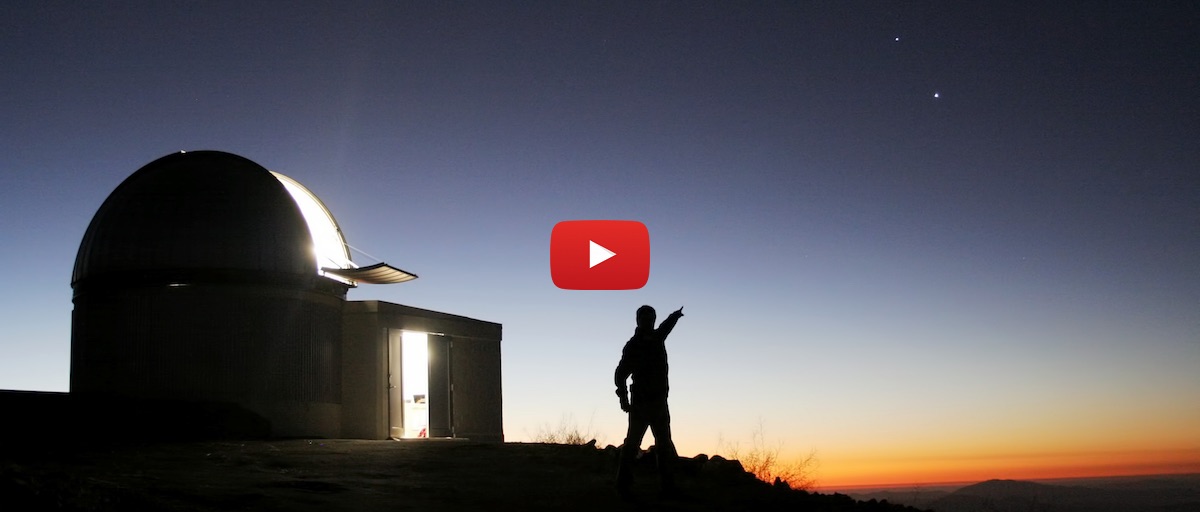
All the planets in the TRAPPIST-1 system transit their star, meaning that they pass in front of it.
The planets were discovered from the regular and repeated shadows that are cast during transit.
Thanks to the transit signals we could measure the orbital periods of the planets and could
calculate the sizes of the planets. The exact time at which the planets transit also provide
us with a means to measure their masses, which leads to knowing their densities and therefore
their bulk properties. The planets are consistent with a rocky composition.
We found that the planets have sizes and masses comparable to the Earth and Venus. Because
we know the distance of the planets to their star, and the temperature of the star, we can deduce
that they receive an amount of light that is similar to many of the planets in the Solar system, from Mercury
to beyond Mars.
During transit, some of the starlight goes through the atmosphere of the planets, getting transformed
by the chemical composition of the atmosphere and by its vertical structure. This means that we can
remotely study the climates of terrestrial worlds beyond our Solar system! The TRAPPIST-1 worlds are the most
optimal currently at our disposal. They are providing humanity with it first opportunities at
discovering evidence of biology beyond the Solar system.
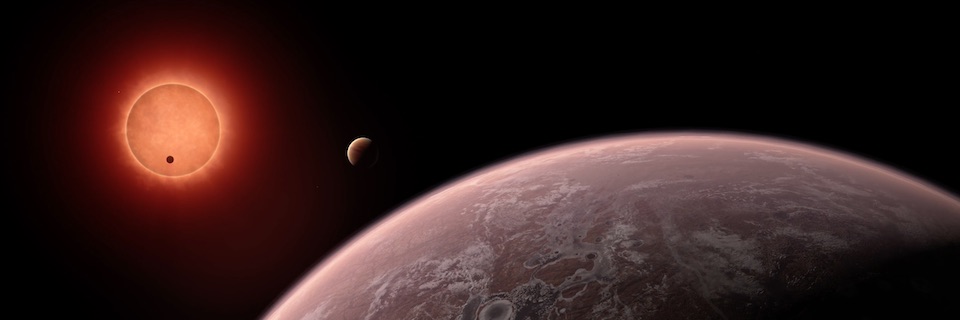
This website is edited by members of the discovery team of TRAPPIST-1 and contains scientific information
about the system as well as artistic and educational material.
Our aim is to collect our best and most up-to-date knowledge of this system,
while communicating our fascination and awe for the remote worlds of TRAPPIST-1.
Principal publications on the system
Grimm et al. 2018, Astronomy & Astrophysics 853, 30. html
de Wit et al. 2018, Nature Astronomy 853, 30. html
Delrez, L. et al. 2018, Monthly Notices of the Royal Astronomical Society 853, 30. html
Van Grootel, V. et al. 2018, The Astrophysical Journal 853, 30. html, pdf, bib
Bourrier, V. et al. 2017, The Astronomical Journal 154, 3. html, pdf, bib
Luger, R. et al. 2017, Nature Astronomy 1, 0129. html, bib
Gillon, M. et al. 2017, Nature 542, p456. html, pdf, bib
de Wit, J. et al. 2016, Nature 537, p69. html, pdf, bib
Gillon, M. et al. 2016, Nature 533, p221. html, pdf, bib
Interview of Michaël Gillon
An interview of Michaël Gillon, leader of the TRAPPIST/SPECULOOS team.
Lay article
Triaud, A. & Gillon, M. Dwarf planetary systems will transform the hunt for alien life, published by Aeon
Various press annoucements
Liège - 2018-Feb-22: A year later.
NASA - 2018-Feb-05: Precise masses for the seven planets.
NASA - 2018-Feb-05: First atmospheric study of TRAPPIST-1d, 1e, 1f & 1g.
ESA - 2017-Aug-31: UV observations of the host star.
U. Bern - 2017-May-22: Orbital period of TRAPPIST-1h measured.
NASA - 2017-Feb-23: At least seven planets orbit TRAPPIST-1.
ESO - 2017-Feb-23: At least seven planets orbit TRAPPIST-1.
NASA - 2016-July-20: First atmospheric study on TRAPPIST-1b & 1c.
ESO - 2016-May-02: The first planets are identified in TRAPPIST-1.
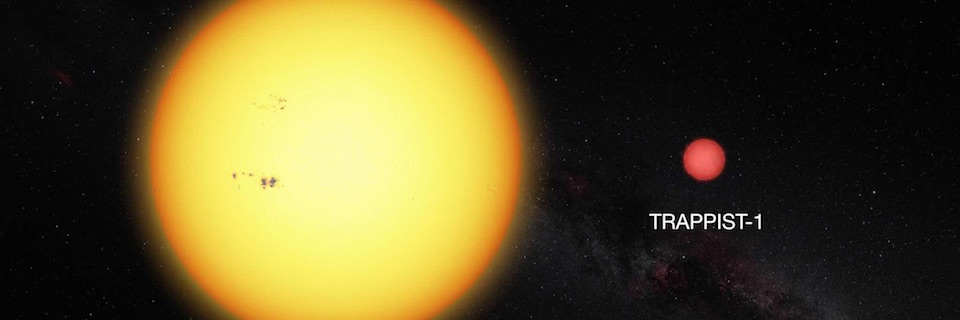
Why focus on ultra-cool stars?
We chose to survey stars that have masses less than 15% the mass of the Sun, for planets. TRAPPIST-1A, the star at the centre of the TRAPPIST-1
system, is representative of our sample. These objects may appear exotic in comparison to our Sun, however they provide various advantages
for the study and the understanding of Earth-like planets.
1 -- Ultra-cool stars are the most frequent kind of star in the Galaxy. Finding planets orbiting those stars is akin
to study the most common planets that exist, which is essential to understanding the formation of Earth-like planets.
They are also crucial in order to one day establish with what frequency biology has emerged in the Cosmos.
Finding planets with conditions, architectures and properties different from those of the Solar system allows us
to place our Earth in context within the many outcomes of Nature.
2 -- Ultra-cool stars are small. This improves enormously our capacity to discover planets with the transit method.
It also helps with the subsequent investigations that are required to learn about their atmospheres.
The small size of the host star means the transit signals produced by Earth-sized planets are 80x more pronounced compared to similar planets transiting
a Sun-like star (the signals from the atmosphere are also enhanced by 80 times).
It is also nearly 50 times faster to confirm a planet. The Earth takes one year to orbit the Sun, whereas around ultra-cool
dwarfs, a similarly temperate planet occupies an orbit lasting only a week.
3 -- It is currently beyond our means to measure the radius and the mass of an Earth-like planet with an Earth-like temperature, orbiting a Sun-like star,
whereas we did it for TRAPPIST-1. Although we all think it is important to search for Earth-like planets orbiting Sun-like stars,
this is not currently practical. While our technologies and our analysis tools mature, we can start the study of terrestrial planets now, by considering
ultra-cool stars, instead of waiting to do so in a decade or two on solar-like stars.
4 -- Finding planets orbiting ultra-cool dwarfs means that we find planets similar to our Earth on several aspects , but different
on several others. For instance, the amount and type of light the planets receive is not the same as what we receive on Earth.
Also the proximity of the TRAPPSIT-1 planets to their star means that they are likely to be tidally-locked.
This signifies that there is a permanent dayside and a permanent nightside. How this affects climate remains mostly unknown.
Planets like those of TRAPPIST-1 will open the study of what appears to our eyes like exotic climates, but that may in fact be
some of the most usual climates outside the Solar system.
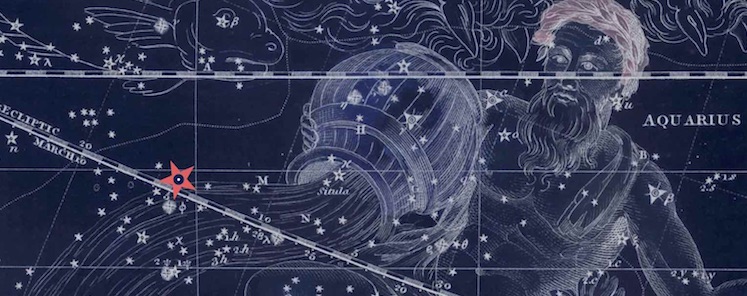
System
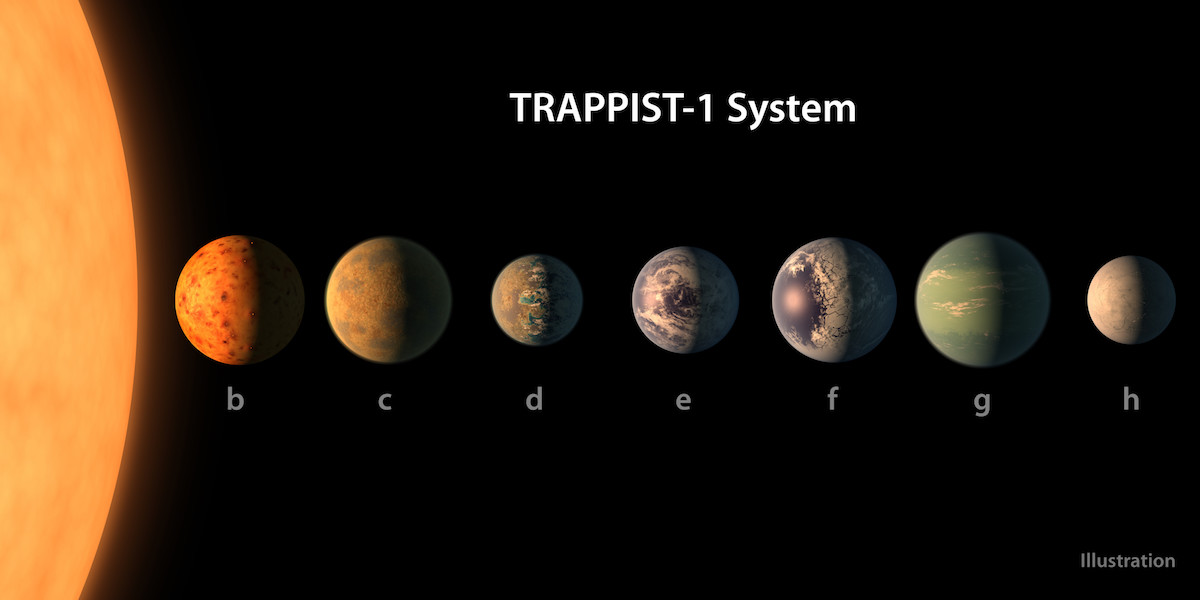
The observed and deduced parameters of the star and its entourage of seven planets are given here. We will attempt to keep those values updated. Currently displayed
are the parameters from Delrez et al. 2018,
from Van Grootel et al. 2018,
and from Grimm et al. 2018.
Some graphs display the planets' parameters plotted against each other, at the bottom of the page.

TRAPPIST-1A - the star
|
| Name |
2MASS J23062928-0502285 |
| Alternate name |
TRAPPIST-1 |
| Right ascension |
α = 23h 06m 29.28s |
| Declination |
δ = -05º 02' 28.5'' |
| Constellation |
Aquarius |
| Apparent magnitudes |
V = 18.80 ± 0.08, R = 16.47 ± 0.07, I=14.0 ± 0.1, J = 11.35 ± 0.02, K = 10.30 ± 0.02 |
| Parallax |
82.4 ± 0.8 mas |
| Distance |
12.14 ± 0.12 pc |
| Mass |
0.089 ± 0.006 M☉ |
| Radius |
0.121 ± 0.003 R☉ |
| Density |
51.1 -2.4+1.2 ρ☉ |
| Effective temperature |
2511 ± 37 K |
| Luminosity |
0.000522 ± 0.000019 L☉ |
| Metallicity [Fe/H] |
+0.04 ± 0.08 |
| Age |
7.6 ± 2.2 Gyr |
|
|
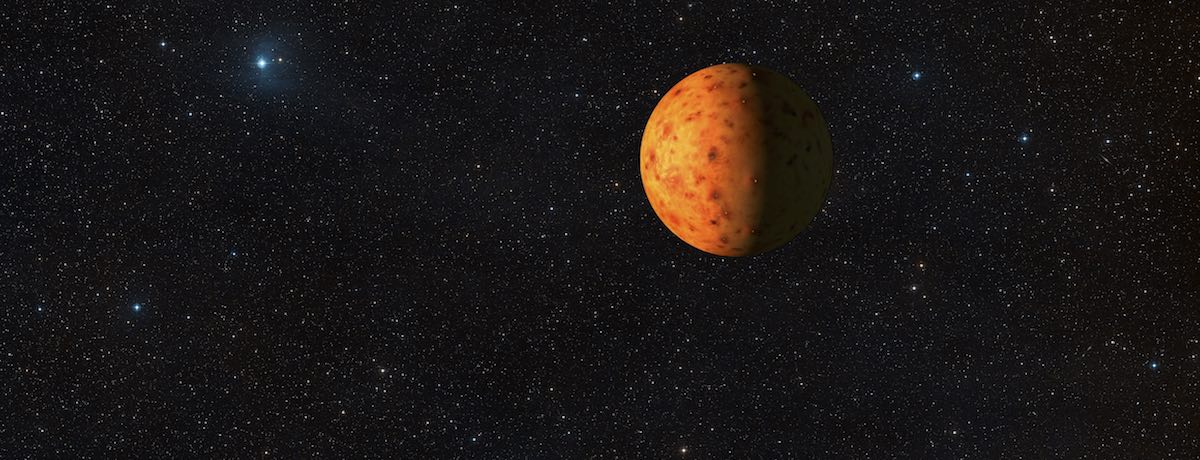
TRAPPIST-1b
| Orbital period |
1.51087637 ± 0.00000039 days |
| Mid-transit time |
2 457 322.51654 ± 0.00010 (Julian Date) |
| Transit depth |
0.7277 ± 0.0075 |
| Scale parameter (a/R★) |
20.56 -0.31+0.16 |
| Impact parameter |
0.157 ± 0.075 R☉ |
| Transit duration |
36.19 ± 0.12 minutes |
| Orbital inclination |
89.56 ± 0.23º |
| Orbital eccentricity |
< 0.081 |
| Semi-major axis |
0.01150 -0.00025+0.00028 AU |
| Radius |
1.127 ± 0.028 R⊕ |
| Mass |
1.02 ± 0.15 M⊕ |
| Density |
0.726 ± 0.92 ρ⊕ |
| Surface gravity |
0.81 ± 0.10 g |
| Irradiation |
3.88 ± 0.22 S⊕ |
| Equilibrium temperature (A=0) |
391.8 ± 5.5 K |
|
|
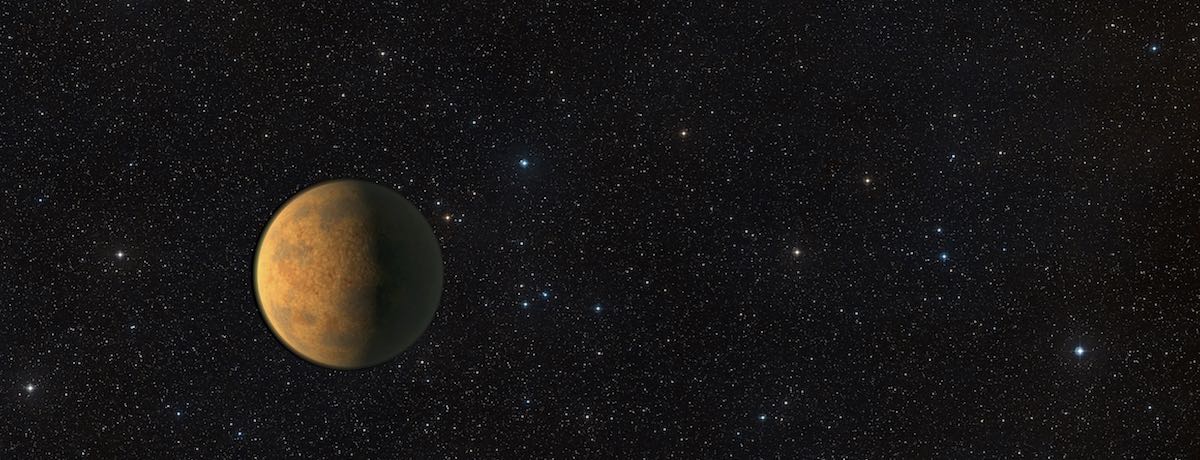
TRAPPIST-1c
| Orbital period |
2.42180746 ± 0.00000091 days |
| Mid-transit time |
2 457 282.80879 ± 0.00018 (Julian Date) |
| Transit depth |
0.6940 ± 0.0068 |
| Scale parameter (a/R★) |
28.16 -0.44+0.22 |
| Impact parameter |
0.148 ± 0.088 R☉ |
| Transit duration |
42.31 ± 0.14 minutes |
| Orbital inclination |
89.70 ± 0.18º |
| Orbital eccentricity |
< 0.083 |
| Semi-major axis |
0.01576 -0.00034+0.00038 AU |
| Radius |
1.100 ± 0.028 R⊕ |
| Mass |
1.16 ± 0.14 M⊕ |
| Density |
0.883 ± 0.081 ρ⊕ |
| Surface gravity |
0.966 ± 0.090 M⊕ |
| Irradiation |
2.07 ± 0.12 S⊕ |
| Equilibrium temperature (A=0) |
334.8 ± 4.7 K |
|
|
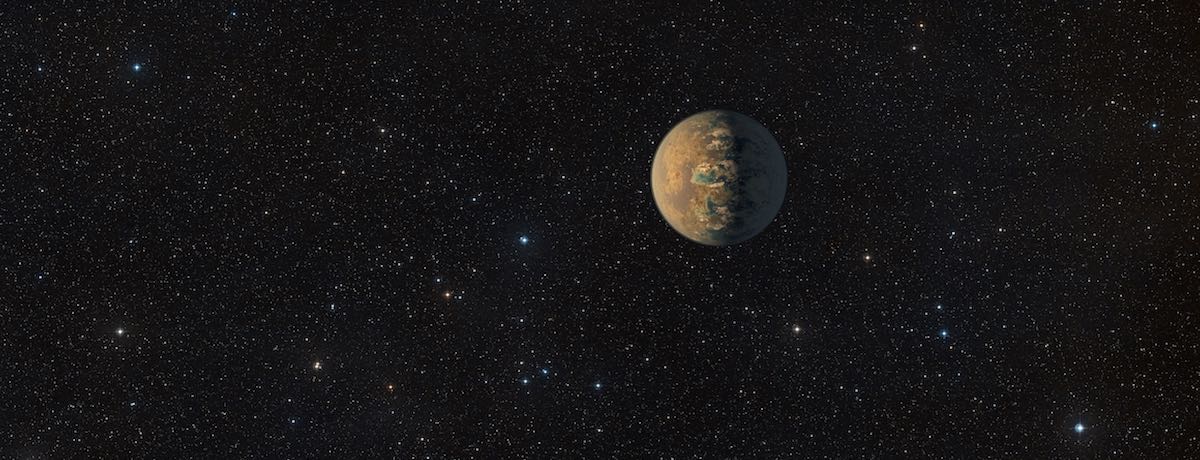
TRAPPIST-1d
| Orbital period |
4.049959 ± 0.000078 days |
| Mid-transit time |
2 457 670.14227 ± 0.00026 (Julian Date) |
| Transit depth |
0.3566 ± 0.0070 |
| Scale parameter (a/R★) |
39.68 -0.62+0.32 |
| Impact parameter |
0.08 -0.06+0.10 R☉ |
| Transit duration |
49.33 -0.32+0.43 minutes |
| Orbital inclination |
89.89º -0.15+0.08 |
| Orbital eccentricity |
< 0.070 |
| Semi-major axis |
0.02219 -0.00048+0.00053 AU |
| Radius |
0.788 ± 0.020 R⊕ |
| Mass |
0.297 ± 0.037 M⊕ |
| Density |
0.616 ± 0.065 ρ⊕ |
| Surface gravity |
0.483 ± 0.50 g |
| Irradiation |
1.043 ± 0.060 S⊕ |
| Equilibrium temperature (A=0) |
282.1 ± 4.0 K |
|
|
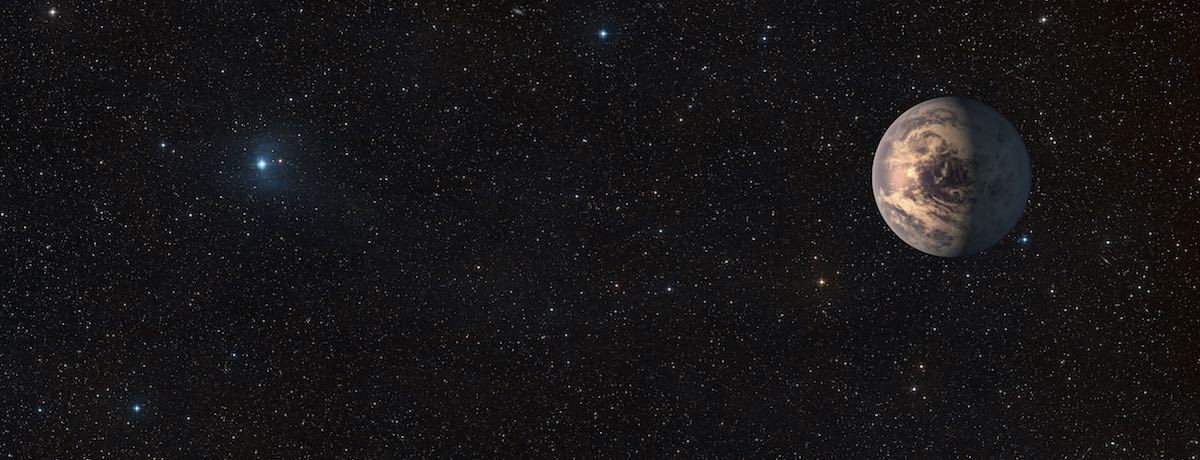
TRAPPIST-1e
| Orbital period |
6.099043 ± 0.000015 days |
| Mid-transit time |
2 457 660.37910 ± 0.00040 (Julian Date) |
| Transit depth |
0.4802 ± 0.0094 |
| Scale parameter (a/R★) |
52.13 -0.82+0.41 |
| Impact parameter |
0.240 -0.047+0.056 R☉ |
| Transit duration |
55.92 ± 0.39 minutes |
| Orbital inclination |
89.73º -0.066+0.053 |
| Orbital eccentricity |
< 0.085 |
| Semi-major axis |
0.02916 -0.00063+0.00070 AU |
| Radius |
0.915 ± 0.025 R⊕ |
| Mass |
0.772 ± 0.077 M⊕ |
| Density |
1.024 ± 0.073 ρ⊕ |
| Surface gravity |
0.930 ± 0.066 g |
| Irradiation |
0.604 ± 0.034 S⊕ |
| Equilibrium temperature (A=0) |
246.1 ± 3.5 K |
|
|
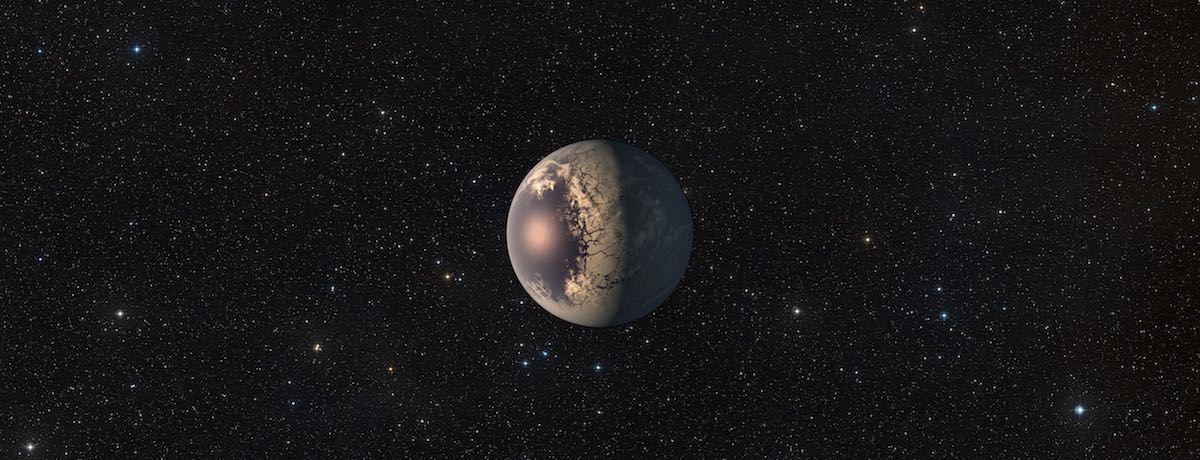
TRAPPIST-1f
| Orbital period |
9.205585 ± 0.000016 days |
| Mid-transit time |
2 457 671.39470 ± 0.00022 (Julian Date) |
| Transit depth |
0.634 ± 0.010 |
| Scale parameter (a/R★) |
68.6 -1.1+0.6 |
| Impact parameter |
0.382 -0.029+0.040 R☉ |
| Transit duration |
63.14 ± 0.36 minutes |
| Orbital inclination |
89.719º -0.039+0.026 |
| Orbital eccentricity |
< 0.063 |
| Semi-major axis |
0.03836 -0.00084+0.00092 AU |
| Radius |
1.052 ± 0.026 R⊕ |
| Mass |
0.934 ± 0.79 M⊕ |
| Density |
0.816 ± 0.037 ρ⊕ |
| Surface gravity |
0.853 ± 0.040 g |
| Irradiation |
0.349 ± 0.020 S⊕ |
| Equilibrium temperature (A=0) |
214.5 ± 3.0 K |
|
|
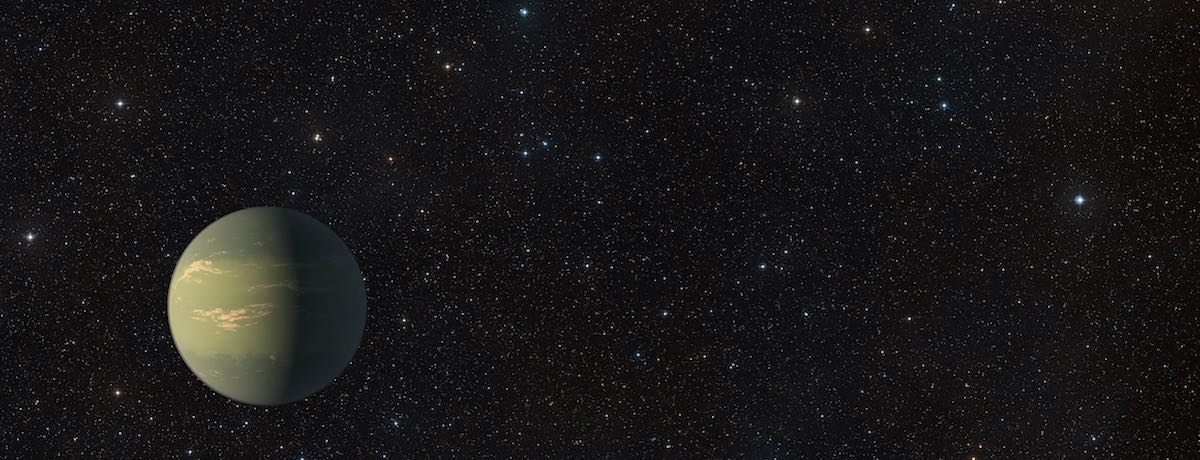
TRAPPIST-1g
| Orbital period |
12.354473 ± 0.000018 days |
| Mid-transit time |
2 457 665.35084 ± 0.00020 (Julian Date) |
| Transit depth |
0.764 ± 0.011 |
| Scale parameter (a/R★) |
83.5 -1.3+0.7 |
| Impact parameter |
0.406 -0.025+0.031 R☉ |
| Transit duration |
68.53 ± 0.37 minutes |
| Orbital inclination |
89.721º -0.026+0.019 |
| Orbital eccentricity |
< 0.061 |
| Semi-major axis |
0.0467 ± 0.0011 AU |
| Radius |
1.154 ± 0.029 R⊕ |
| Mass |
1.148 ± 0.097 M⊕ |
| Density |
0.759 ± 0.034 ρ⊕ |
| Surface gravity |
0.871 ± 0.040 g |
| Irradiation |
0.236 ± 0.014 S⊕ |
| Equilibrium temperature (A=0) |
194.5 ± 2.7 K |
|
|
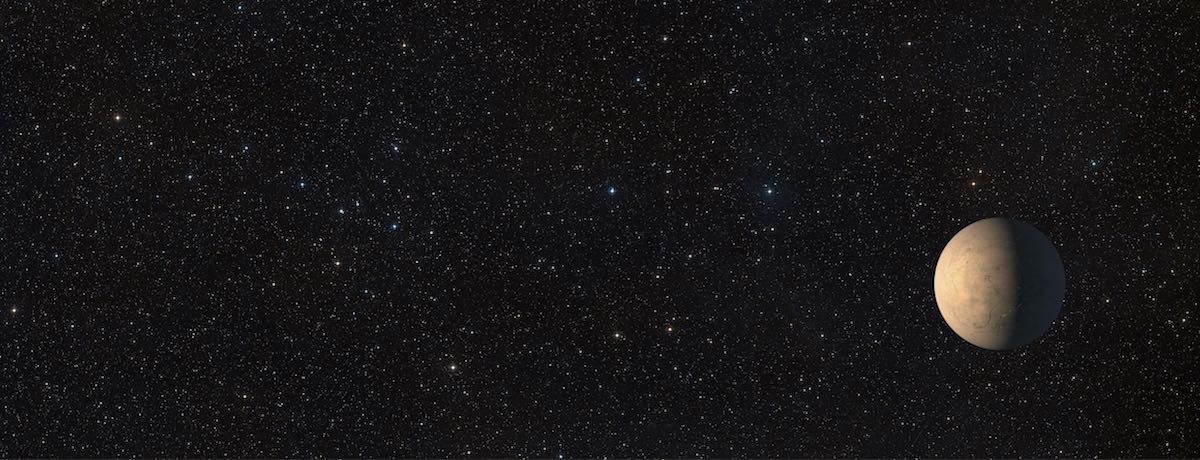
TRAPPIST-1h
| Orbital period |
18.767953 ± 0.000080 |
| Mid-transit time |
2 457 662.55467 ± 0.00054 (Julian Date) |
| Transit depth |
0.346 ± 0.014 |
| Scale parameter (a/R★) |
110.3 -1.7+0.9 |
| Impact parameter |
0.392 -0.043+0.039 R☉ |
| Transit duration |
76.92 ± 0.96 minutes |
| Orbital inclination |
89.796 ± 0.023º |
| Orbital eccentricity |
unknown |
| Semi-major axis |
0.0617 -0.0013+0.0015 AU |
| Radius |
0.777 ± 0.025 R⊕ |
| Mass |
0.331 ± 0.053 M⊕ |
| Density |
0.72 ± 0.11 ρ⊕ |
| Surface gravity |
0.555 ± 0.080 g |
| Irradiation |
0.135 ± 0.076 |
| Equilibrium temperature (A=0) |
169.2 ± 2.4 K |
|
|
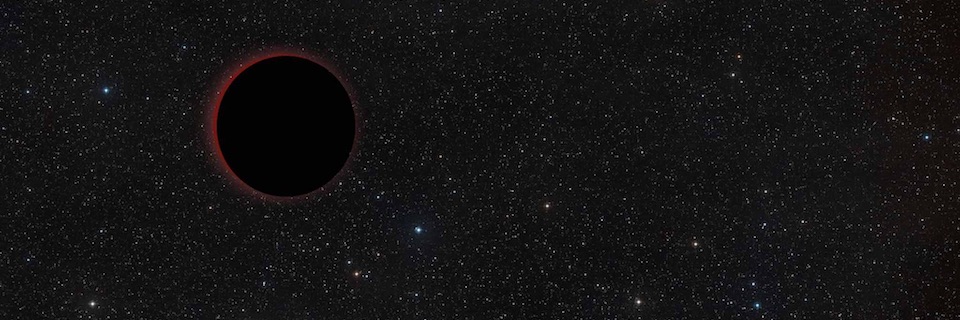
TRAPPIST-1x
|
It is possible that other planets exist around TRAPPIST-1. Further observations may tell us about their presence, notably from transit timing variations.
Lengthy observations with Spitzer
and with K2 have shown no additional transit signal. |
Plots
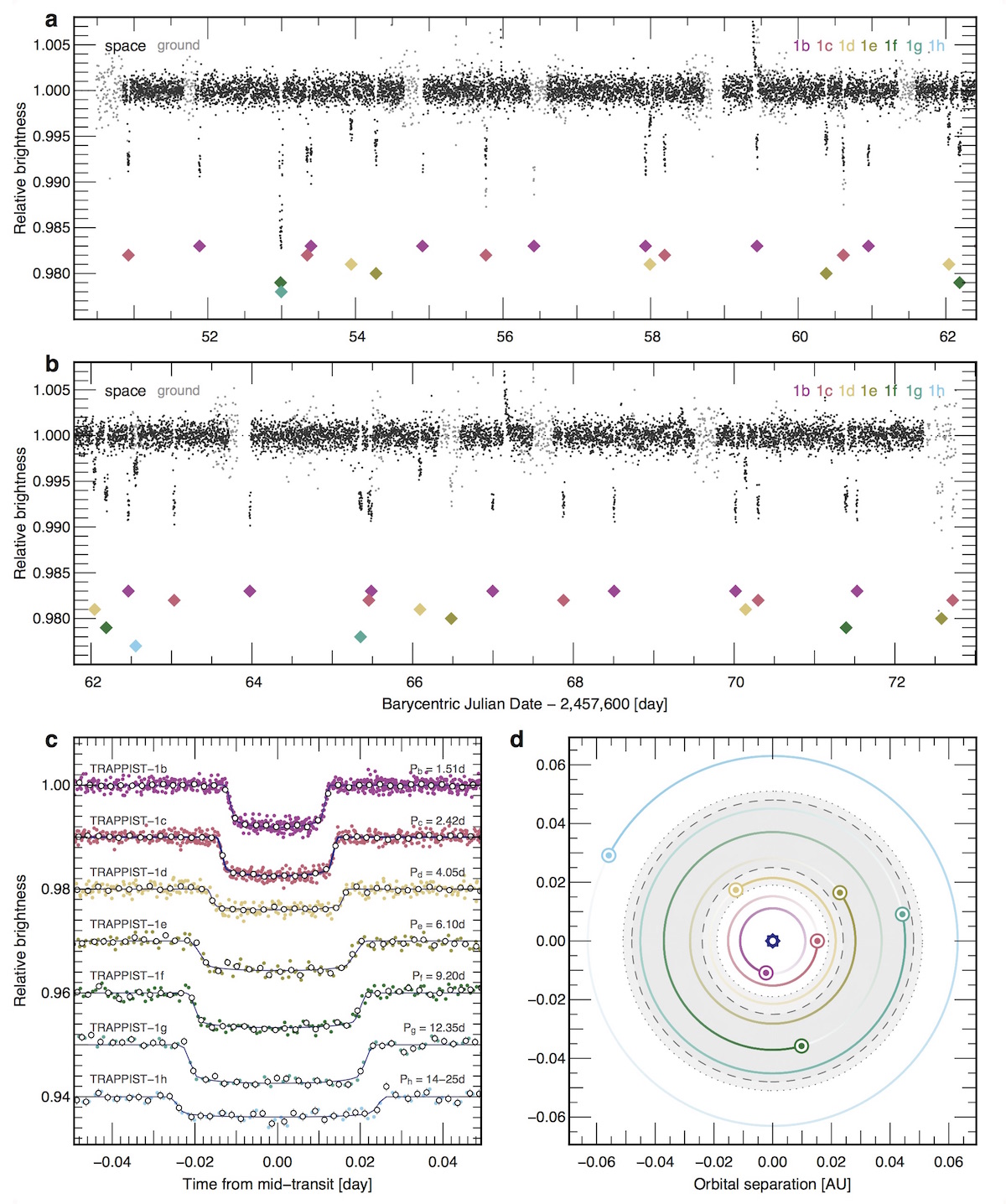
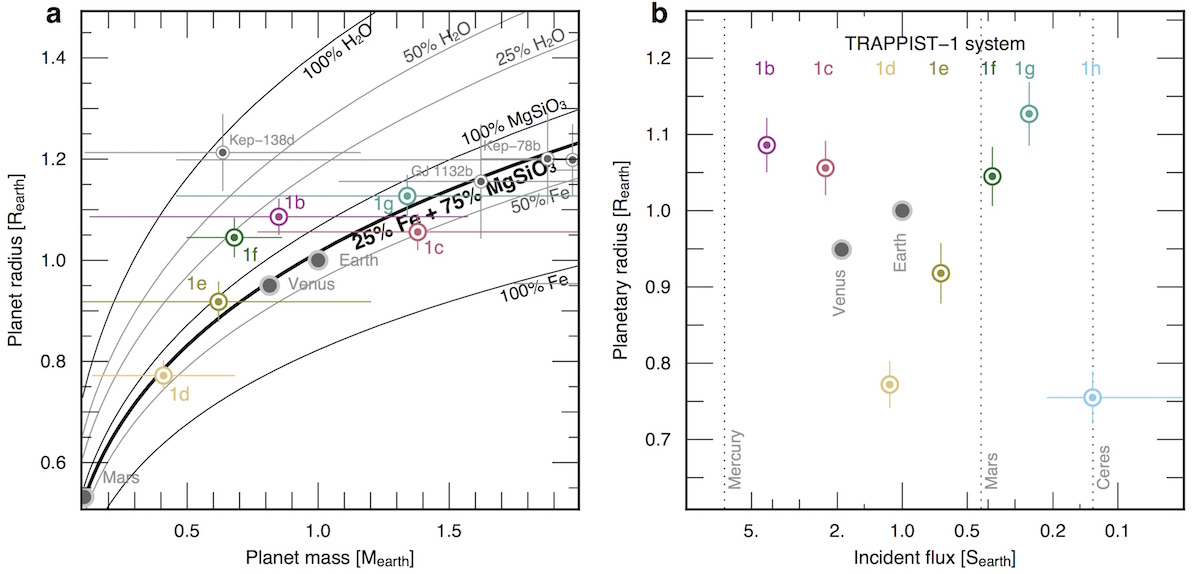
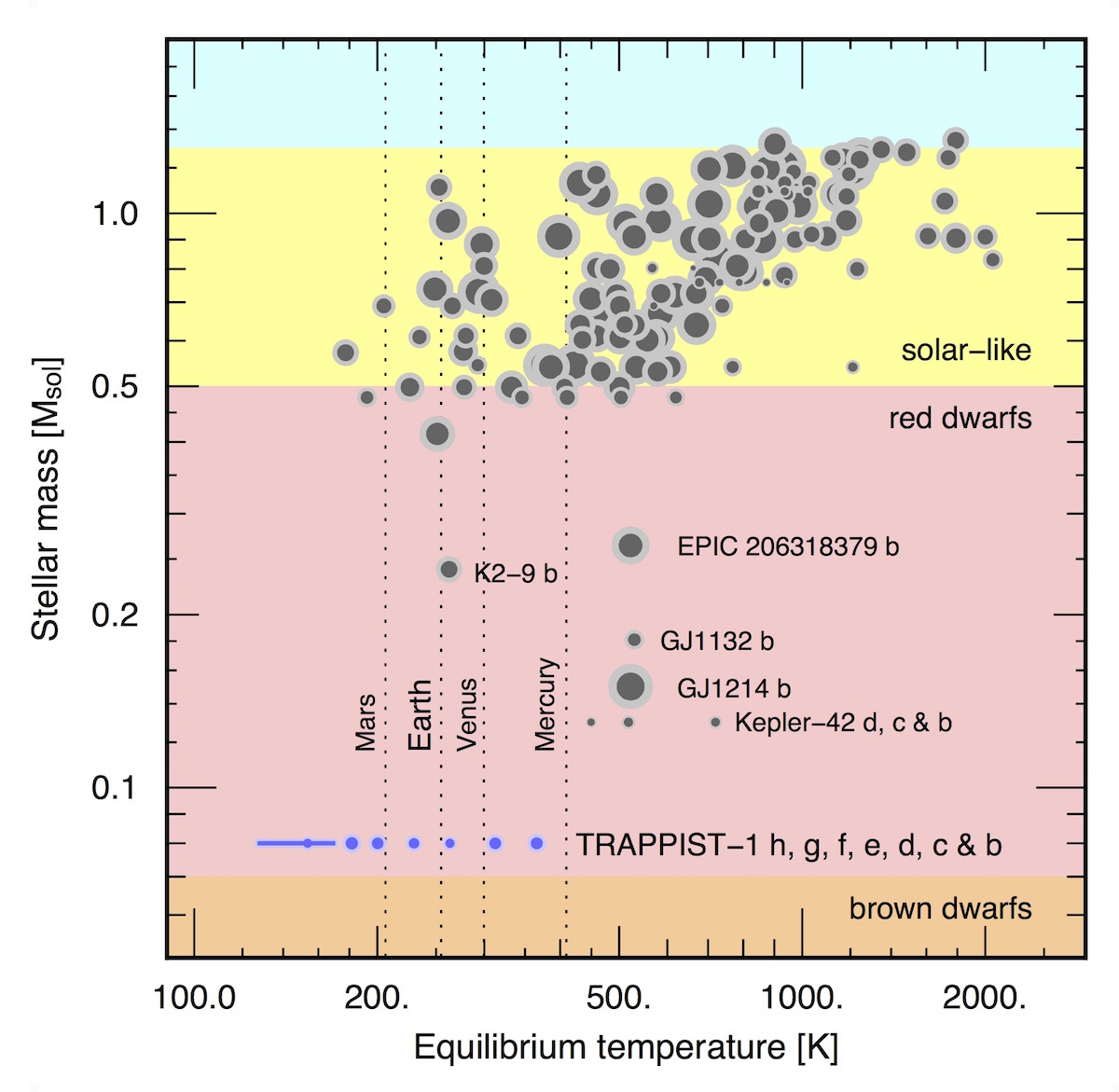
video of the system:
Timeline
Most discoveries take time to make. Even though time seemed to have flown by very rapidly when it came to TRAPPIST-1, the path leading
to the discovery of the system took many efforts over nearly a decade.
2018
Feb 22nd
A year after the big announcement, what have we learned. See here.
Feb 5th
New series of scientific papers finally published. They refine the properties of the star, and its seven planets, as well as start
their atmospheric investigations. Several of the planets appear under-dense compared to Earth, maybe indicating vast amount of water. TRAPPIST-1e is the closest
of the seven to Earth.
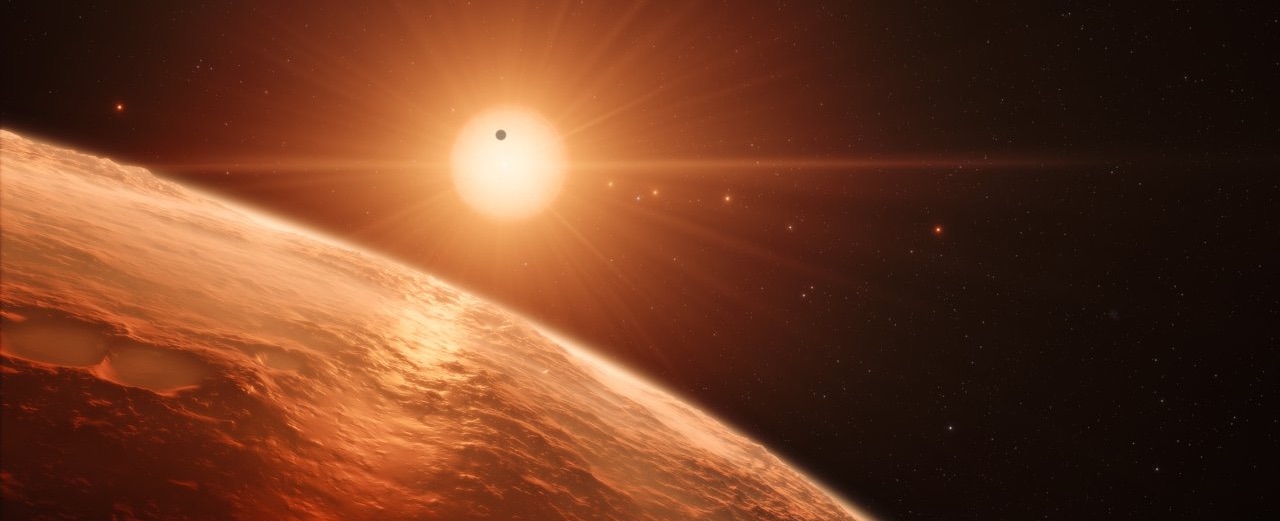
2017
Aug 31st
Scientific paper reporting Ultraviolet observations, suggesting the outer planets might still host water.
May 22nd
Scientific paper on the orbital period of TRAPPIST-1h is published.
Apr 4th
Scientific paper on the orbital period of TRAPPIST-1h is accepted by Nature Astronomy.
Mar 20th
Europa, the first of the four SPECULOOS telescopes has its first light!
Mar 11th
Scientific paper on the orbital period of TRAPPIST-1h is sent to Nature Astronomy.
Mar 9th
Planet 1h is recovered from the K2 data, at the expected orbital period!
Mar 8th
K2 data is made public, start of analysis.
Mar 4th
K2 finishes its observations.
Feb 23rd
Publication of the discovery in Nature.
Feb 22nd
Press conference at NASA's headquarters in Washington DC.
Feb 2nd
Prediction made that TRAPPIST-1h will likely have an orbital period of 18.765 days. Request sent to Spitzer to observe the March 28th transit opportunity (which was successful).
Jan 3rd
The scientific paper is accepted by Nature.

2016
Dec 15th
K2 starts observing its campaign 12. TRAPPIST-1 is right on the edge of the telescope's field of view.
Nov 21st
The paper describing the existence, and providing the radii and masses of seven planets in the TRAPPIST-1 system, is submitted to Nature. They also communicate their enthusiasm at the idea of pairing our scientific paper with a sci-fi short story. (read it here).
Oct 7th
End of observations with Spitzer. By eye, it is clear that many planets transit the star at the centre of the TRAPPIST-1 system. Excitement is at its peak!
Oct 6th
TRAPPIST-North is inaugurated in Oukaïmeden Observatory, Morocco.
Oct 1st
First recorded transit of TRAPPIST-1h.
Sep 19th
Beginning of observations with the Spitzer Space Telescope. TRAPPIST (North & South), the Liverpool Telescope and UKIRT are in support from the ground to fill in gaps in the Spitzer coverage (caused by a need to upload data back to Earth).
Aug 5th
Announce that the Spitzer Space Telescope will observe TRAPPIST-1 for nearly continuous 20 days. By this date our collected ground-based data made clear that more that the original period for TRAPPIST-1d was incorrect that more than 3 planets orbited the star.
Jun 6th
First recorded transit of TRAPPIST-1d (using the nomenclature of the most recent paper).
Jun 3rd
First spectrum for the planets TRAPPIST-1b & 1c is publicly announced.
May 4th
TRAPPIST-1b & TRAPPIST-1c transit at the exact same time.
The Hubble Space telescope is recording the event.
May 2nd
Public announcement that three Earth-sized planets orbit a nearby ultracool dwarf.
May 1st
TRAPPIST resumes observations of the system (visible >1h from La Silla Observatory). It is soon joined by the Liverpool Telescope and the William Herschel in La Palma, the VLT in Chile, the 1 metre telescope at the South-African Astronomical Observatory, and UKIRT in Hawai'i.
Mar-Apr
Many requests sent to observatories around the globe to monitor for TRAPPIST-1, to confirm the orbital period of planet d, and search for additional planets.
Feb 18th
Scientific article is accepted by Nature.
Jan 11th
Submission of the discovery of TRAPPIST-1b & 1c, and proposing a solution of a planet 1d to Nature.
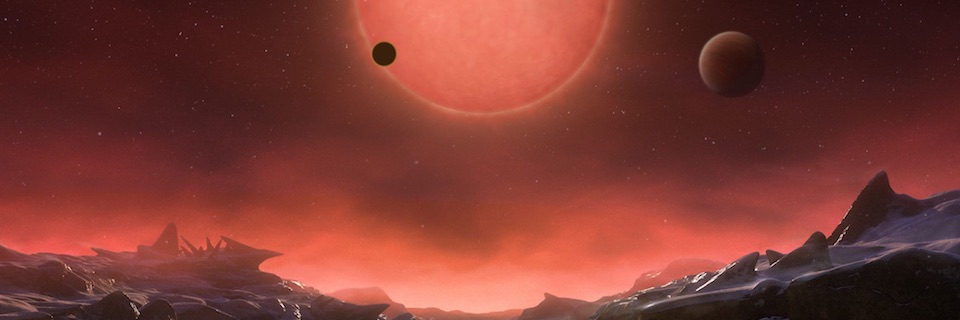
2015
December 15th
TRAPPIST stops observations of the system (visible <1h from La Silla Observatory)
December 11th
The VLT captures a triple transit on TRAPPIST-1, puzzling but amazing the team, later known to be a combination of TRAPPIST-1c, 1e & 1f.
October 27th
First recorded transit of TRAPPIST-1b.
October 26th
First recorded transit of TRAPPIST-1f, but not recognised right away as such.
October 17th
First recorded transit of TRAPPIST-1e, but not recognised right away as such.
September 29th
First recorded transit of TRAPPIST-1g, but mistaken as TRAPPIST-1d and announced as such in the first scientific paper on the system.
September 17th
First recorded transit of TRAPPIST-1c. Intense photometric monitoring of the star begins.
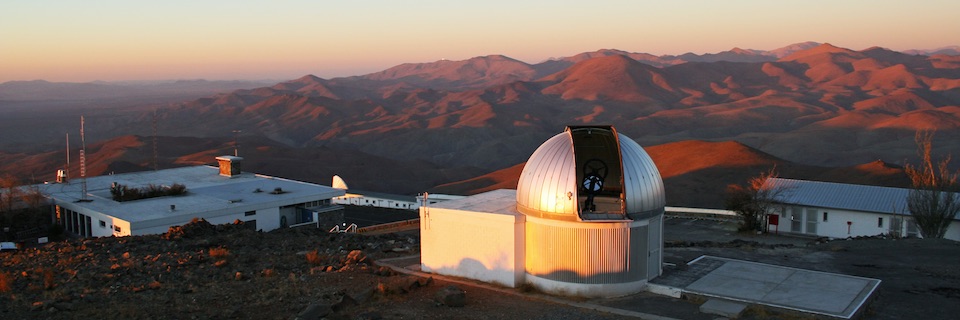
2013
October 3rd
First datapoints collected on TRAPPIST-1.
June 10th
The initial funding for SPECULOOS is accepted.
April 1st
First publication of TRAPPIST photometry on an ultra-cool dwarf, the nearby brown dwarf pair Luhman-16, is submitted to the Astronomy & Astrophysics journal.
These observations demonstrated it was possible to discover Earth-sized planets from the ground, using small telescopes.
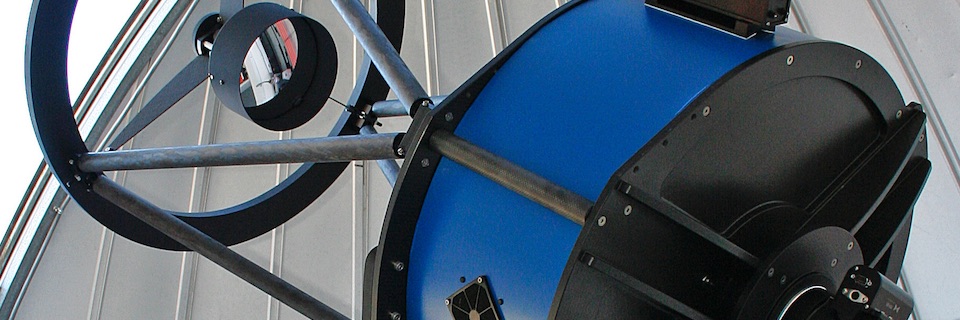
2011
January 9th
First observation of an ultra-cool dwarf by TRAPPIST, in preparation for SPECULOOS.
2010
June 8th
First light of the telescope at La Silla Observatory. Operations are starting.
The main focus is to participate in the search for hot Jupiters with WASP (www.wasp-planets.net) and to study small bodies
of the Solar system.
2008
The funding for the construction of TRAPPIST is accepted.
Future

The study of the TRAPPIST-1 system is only starting.
In the short term, photometric follow-up using the repurposed
Kepler satellite (named K2) along with with newer observations using Spitzer ought
to reveal the period of planet 1h. We will also search for additional planets. Theses lightcurves, combined with ground-based
measurements will increase the number of transit timing measurements for each of the planets. This will give us more accurate
masses and orbital eccentricities. This will confirm whether the planets are mostly rocky or whether they contain a certain amount of volatiles, like water.
In the medium term, we can expect the first attempts at detecting the atmospheres of the TRAPPIST-1
planets, using Hubble, followed by deeper investigations thanks to the
James Webb.
The James Webb could in principle measure the temperature of the planets,
and detect the chemical composition of their atmospheres. It will do so by collecting dozens of eclipses of the TRAPPIST-1 planets. The advantage of having seven
planets in one system is that we will be able to compare them to one another.

TRAPPIST monitored a few dozen ultra-cool dwarfs photometrically. This is a prototype for a more
important and ambitious survey called the Search for Planets EClipsing ULtra-COOl Stars
(SPECULOOS), which is currently
under construction at
Cerro Paranal.
With SPECULOOS, we will observe more than ten times more stars than TRAPPIST did, at a greater precision.
Before the survey is over we expect to have discovered a dozen of planetary systems akin to TRAPPIST-1. All will
be amenable for in-depth atmospheric investigations with the James Webb.
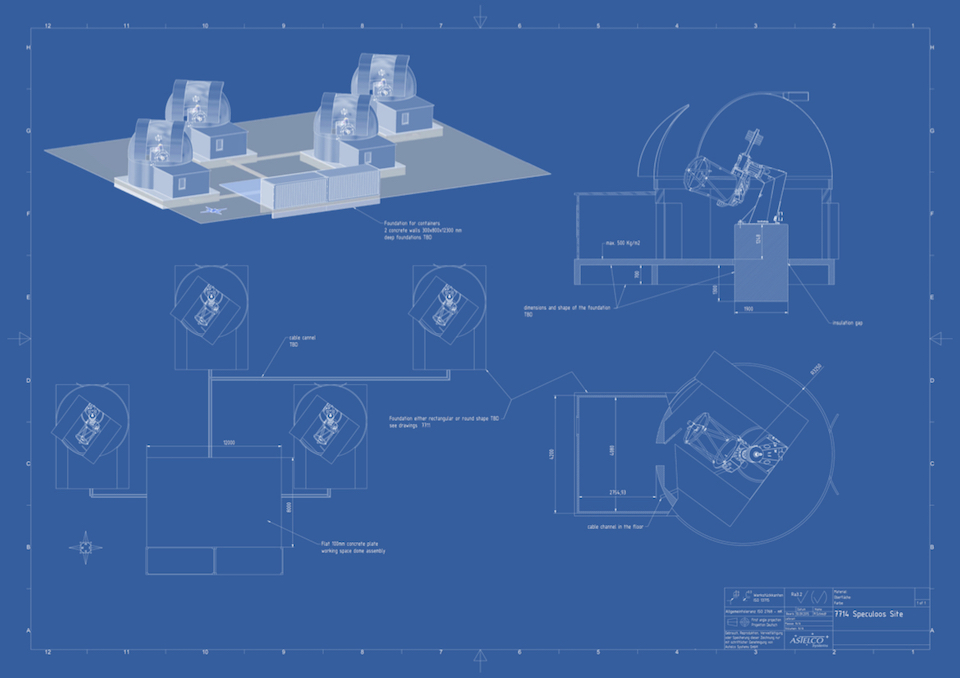
News
Here we list the progress reported in the scientific literature, in our understanding of the star and the planets within the TRAPPIST-1 system.

2018/02/15
Comets impacting the TRAPPIST-1 planets have the capacity to destroy their atmospheres, but also to replenish them, and completely alter their chemical composition.
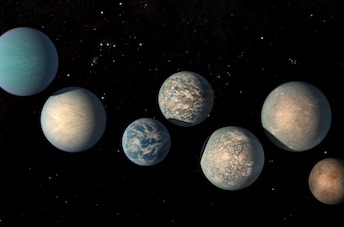
2018/02/05
Careful analysis of the variations of transit times give new mass estimates. Most TRAPPIST-1 planets compatible with vast amount of water. TRAPPIST-1e appears the most Earth-like.
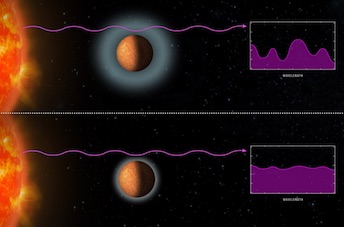
2018/02/05
Hubble observations during the transits of TRAPPIST-1d, e, f show no evidence for Hydrogen/Helium atmospheres, paving the way for future investigations.
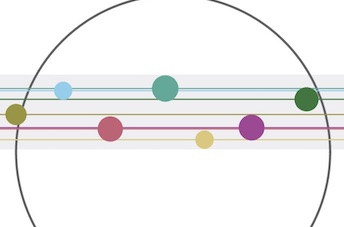
2018/01/09
Updated parameters for the TRAPPIST-1 planets, from the analysis of new set of Spitzer photometric data. We see little very impact from stellar activity.
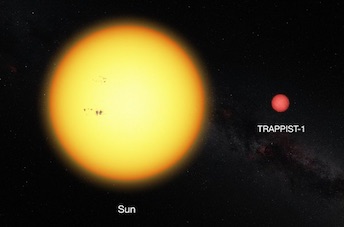
2017/12/07
The mass of the star at the centre of the TRAPPIST-1 system has been revised up, to 0.09M☉. This slightly affects the distance of the planets are from the star.

2017/11/29
The proximity of the TRAPPIST-1 planets to their star, and to one another would allow plate tectonics. Earthquakes may even trigger at conjunction.
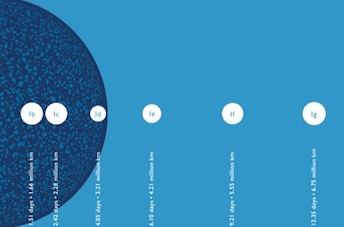
2017/11/21
The TRAPPIST-1 planets consists of an inner set of three, and a separate, outer set of four planets. Tidal interactions could be making planet e and f more habitable, triggering tectonics.
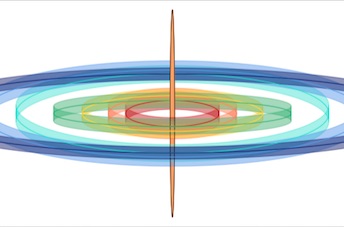
2017/11/16
The TRAPPIST-1 planets are likely to overlap each other, producing minute signals, but detectable nevertheless, opening the door to topographic mapping.
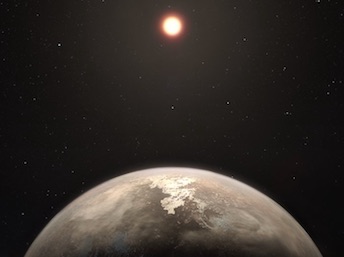
2017/11/15
A new temperate Earth-mass planet identified in the Solar-system's vicinity, orbiting a star not too different from TRAPPIST-1. There appears to be so many of these worlds!
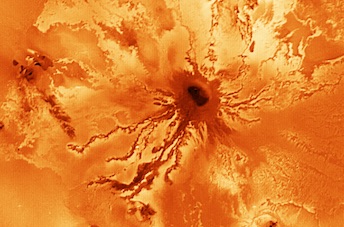
2017/10/25
Simulations of the TRAPPIST-1 planets show we can expect intense volcanism, and maybe magma oceans on the innermost planets of the system.
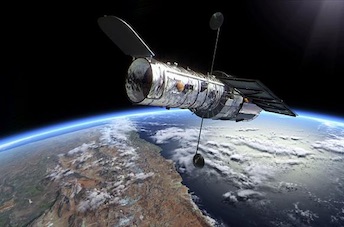
2017/08/31
The ultraviolet flux of TRAPPIST-1 is monitored with
Hubble. This suggests the outer planets could keep an atmosphere, and some oceans.

2017/08/14
Models for the atmospheres of several terrestrial planets, including TRAPPIST-1's, confirm that we will be able to study them using JWST. Exciting!
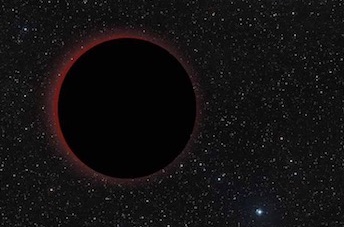
2017/08/07
Precise measurement on the position of the star limit the presence of Jupiter-type planets. They also revise the distance of the star to 41ly.
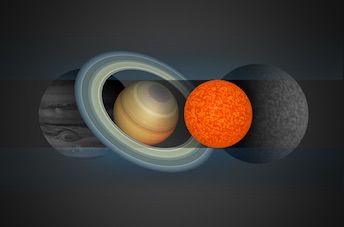
2017/07/12
A star as large as Saturn is measured. Its mass is compatible with the star at the centre of the TRAPPIST-1 system, but its size is 30% smaller.

2017/06/07
The age of TRAPPIST-1 analysed. The star is likely older than our Sun (7.6 ± 2.2 Gyr)! Important implications about orbital stability.

2017/05/26
Gravitational interactions between resonant planets might move them outside of exact tidal locking. Could the TRAPPIST-1 planets slowly rotate?
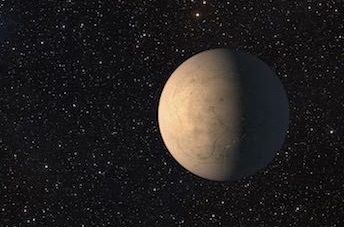
2017/05/22
Using K2 data,
the orbital period of TRAPPIST-1h is measured, just as had been predicted. All planets are likely in three body resonances.

2017/04/25
Theoretical work explaining the low occurence of resonances in the Kepler
multi-planetary system has a corollary: Earth-massed planets orbiting very low mass stars ought to be in resonances.
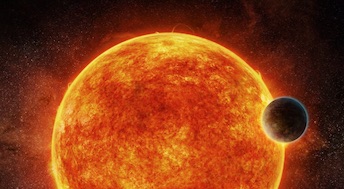
2017/04/20
A new temperate, and rocky planet discovered! Congratulations to our MEarth
& HARPS colleagues.
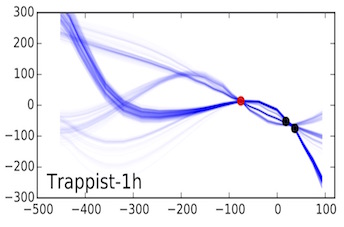
2017/04/13
New masses proposed for the TRAPPIST-1 planets. This study suggests lighter masses, meaning lower densities, implying large amount of water...
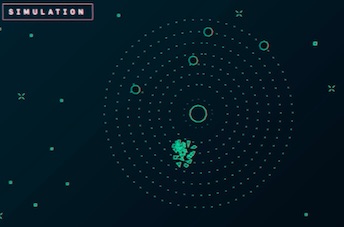
2017/04/10
A careful set of simulations shows that planetary systems closely resembling TRAPPIST-1 can be stable as long as could be computed.

2017/04/06
The TRAPPIST-1 planets are likely to be moonless, on account of their proximity to each other and to their host star.
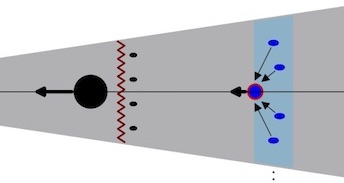
2017/03/20
A new scientific paper proposes a narrative for the formation of the TRAPPIST-1 system.
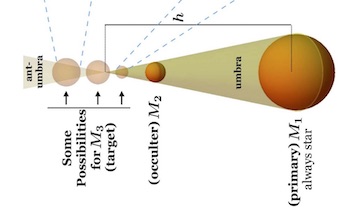
2017/03/09
The probability of planet-planet eclipses calculated for TRAPPIST-1. None of them can cast a total eclipse though, nevertheless, likely a nice spectacle!

2017/03/02
The proximity of the TRAPPIST-1 planets from each other would make panspermia (the transmission of life from planet to planet) possible.

2017/02/23
The TRAPPIST-1 system contains seven Earth-sized, Earth-massed, temperate planets!!!

2017/02/22
Observations carried out in the Ultra-Violet part of the spectrum, with the
Hubble Space Telescope, show that TRAPPIST-1 is a moderately active star.
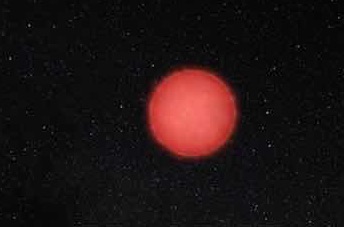
2016/12/13
Thousands of very low mass stars are identified and compiled into a catalog. Possibly dozens of new targets for SPECULOOS!
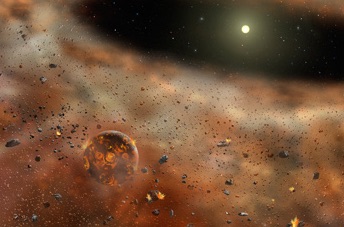
2016/10/13
A computer simulation finds that would planets form around a star with a mass about that of TRAPPIST-1, then they most likely
have sizes similar to the Earth, just like in TRAPPIST-1.
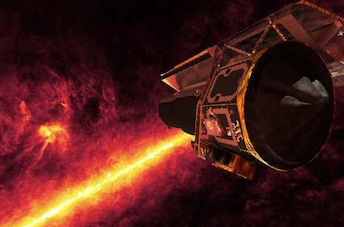
2016/09/20
A study of archival Spitzer data gives the first idea of how frequent Earth-sized worlds exist on ultra-cool dwarfs: 30-45% !! If so TRAPPIST-1 will soon
have friends. Exciting!
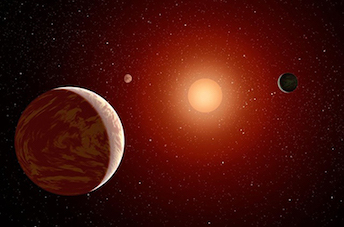
2016/09/13
Gemini high-contrast observations confirm TRAPPIST-1 is a single star. Planetary parameters are therefore robust.
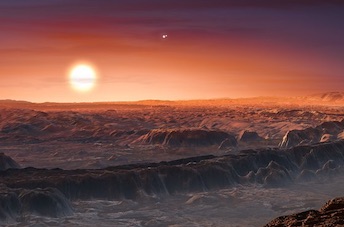
2016/08/24
A temperate, Earth-mass planet discovered orbiting Proxima Centauri, the closest star to the Solar system, and not that unlike TRAPPIST-1.
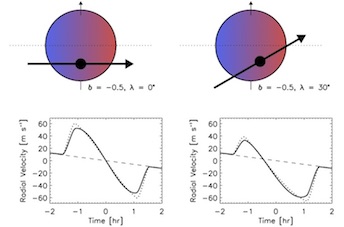
2016/08/03
It will be possible to study how inclined the orbital plane of the TRAPPIST-1 system is, with respect to its host star, giving clues on its past history.

2016/06/28
Discovering systems like TRAPPIST-1 using K2, the refurbished Kepler spacecraft will be hard, but TRAPPIST-1 itself will be observed.
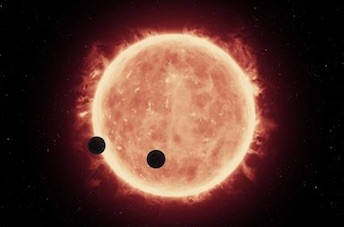
2016/06/03
Using Hubble, first attempt at measuring the atmospheres of Earth-sized planets. Planets TRAPPIST-1b & 1c do not possess Hydrogen envelopes.
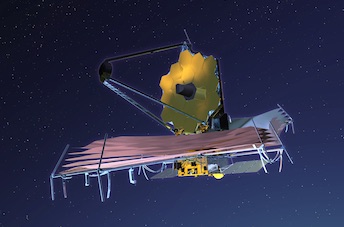
2016/05/25
The TRAPPIST-1 planets confirmed to be good targets for the James Webb Space Telescope. Ozone, if present, would be detectable! The James Webb launches in Autumn 2018.
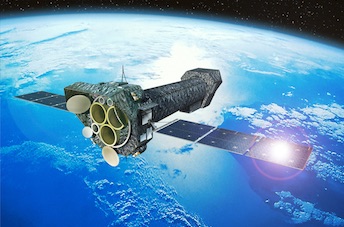
2016/05/05
TRAPPIST-1 is visible in X-rays. Archival data from XMM/Newton contains a timeseries. TRAPPIST-1 is variable and as bright as the Sun in its quiet phase.
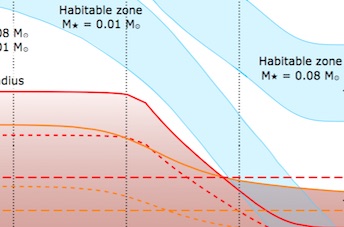
2016/05/02
Water-loss due to entering the habitable-zone on the hot end is not always a problem. Applications to the TRAPPIST-1 planets, that could have retained oceans.
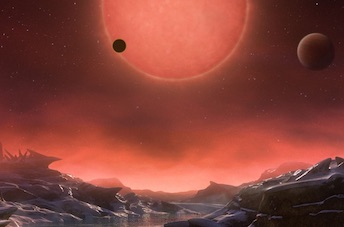
2016/05/02
TRAPPIST-1 discovered! First description of the planetary system, of some of its planets and of the star they orbit.
Gallery
Visual art inspired by the TRAPPIST-1 system.
by Paul Van Hoeydonck
by Amanda J. Smith
by NASA
by Marie-Jo Parron
Paul Van Hoeydonck
A piece by celebrated artist Paul Van Hoeydonck, inspired by TRAPPIST-1 and generously donated the Liège team.
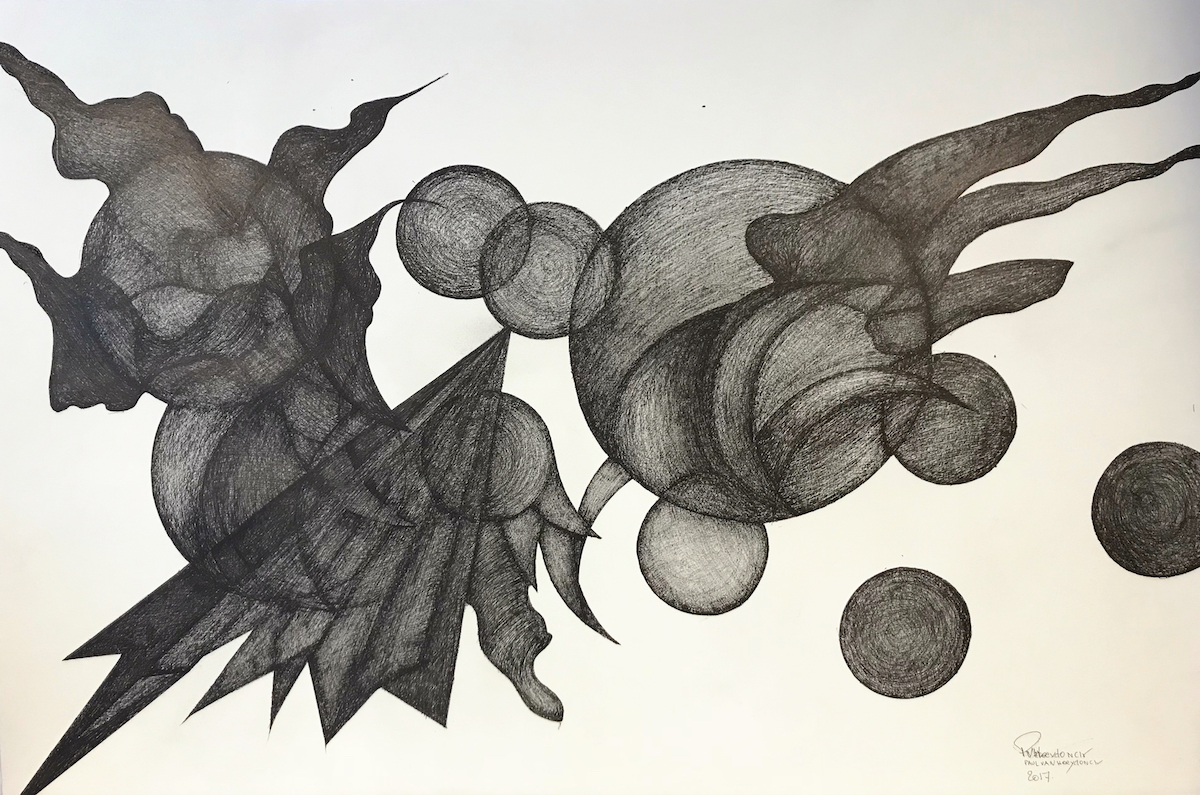
Amanda J. Smith
A set of collages created by Amanda Smith that celebrate the TRAPPIST-1 collaboration and explore our primal hopes
and concerns for future discoveries. A combination of techniques were used to create each piece,
including: painting, photography, printmaking, 3D modelling and working with found material.
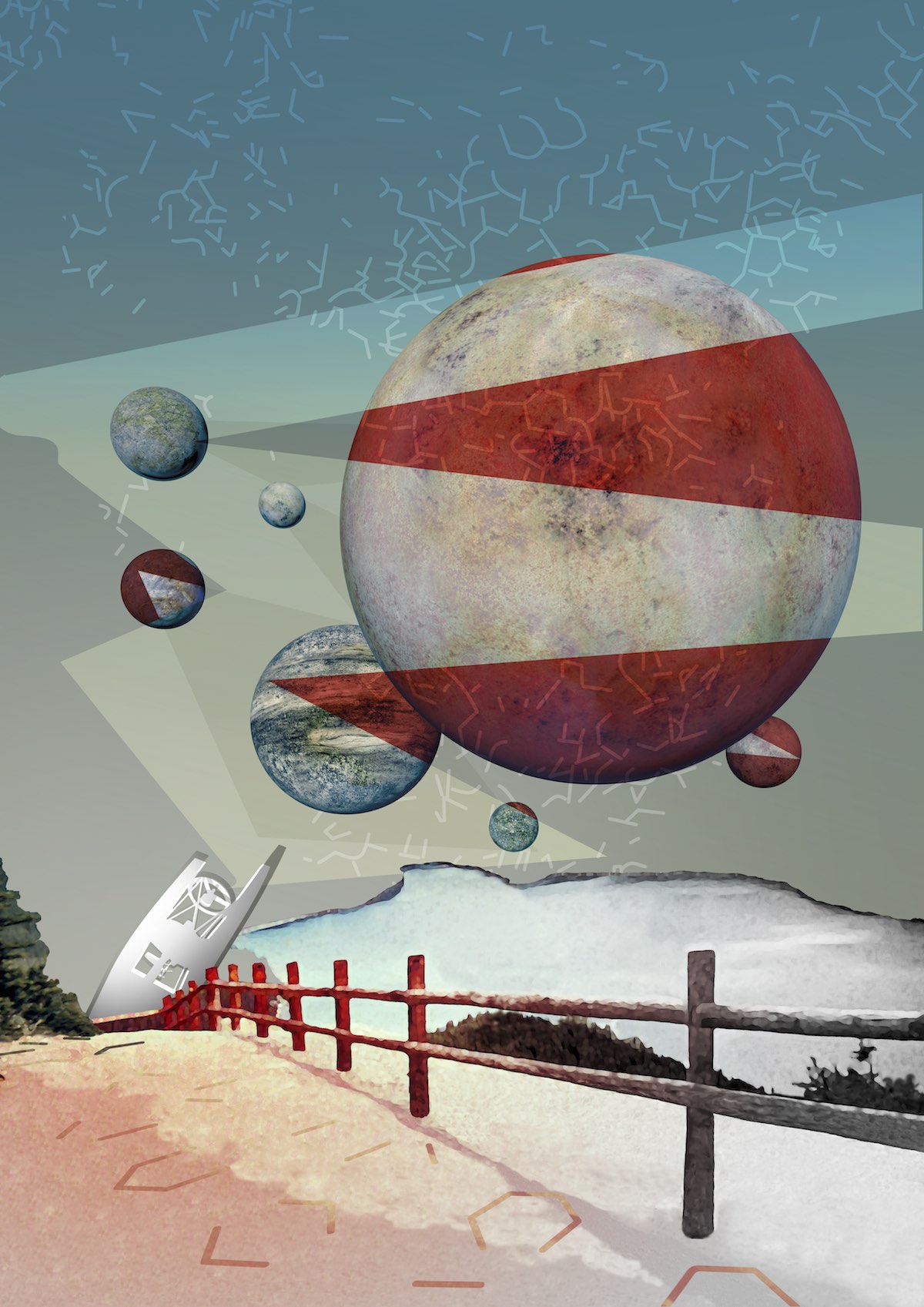
Mixed Message.
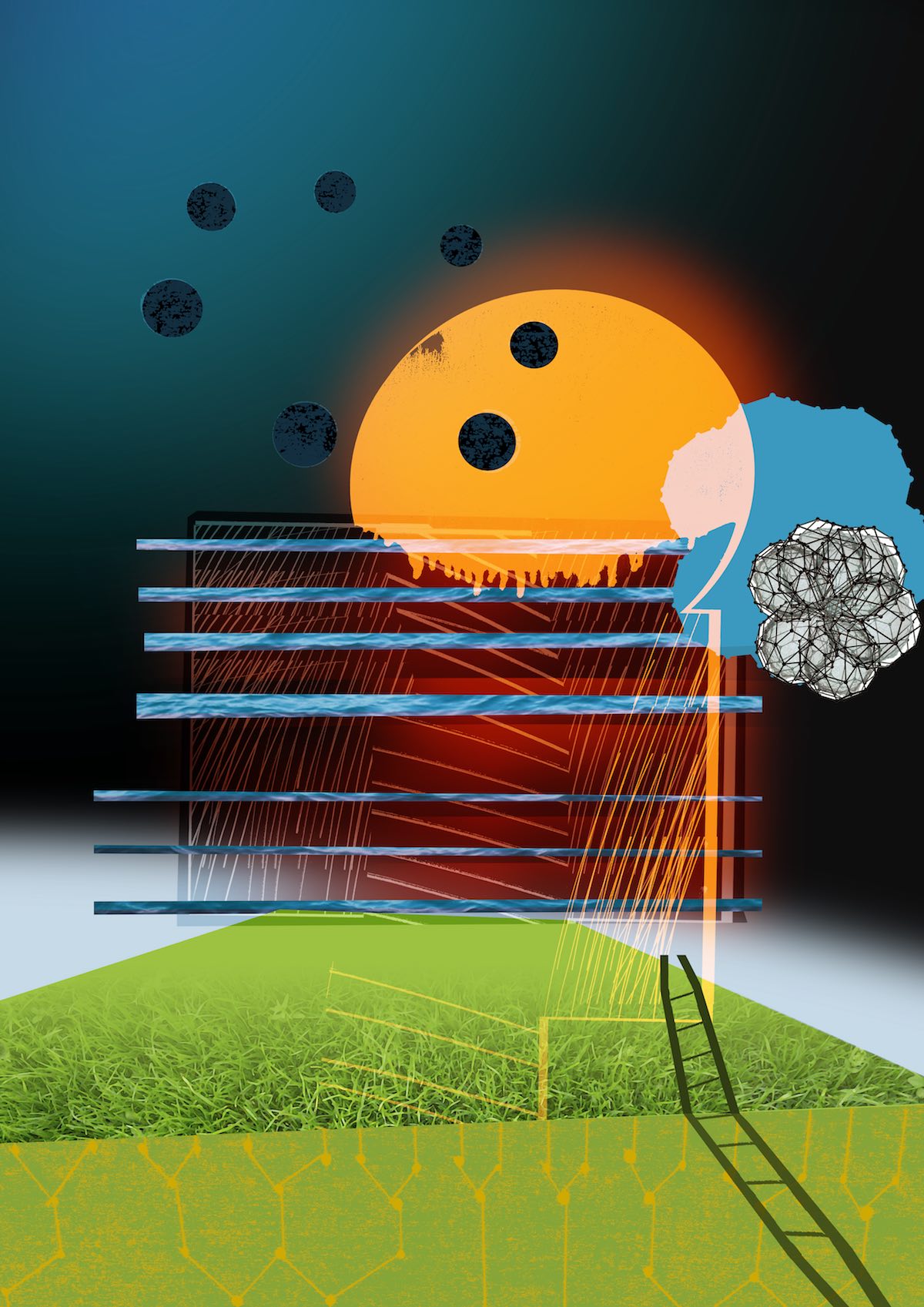
Hidden Light.
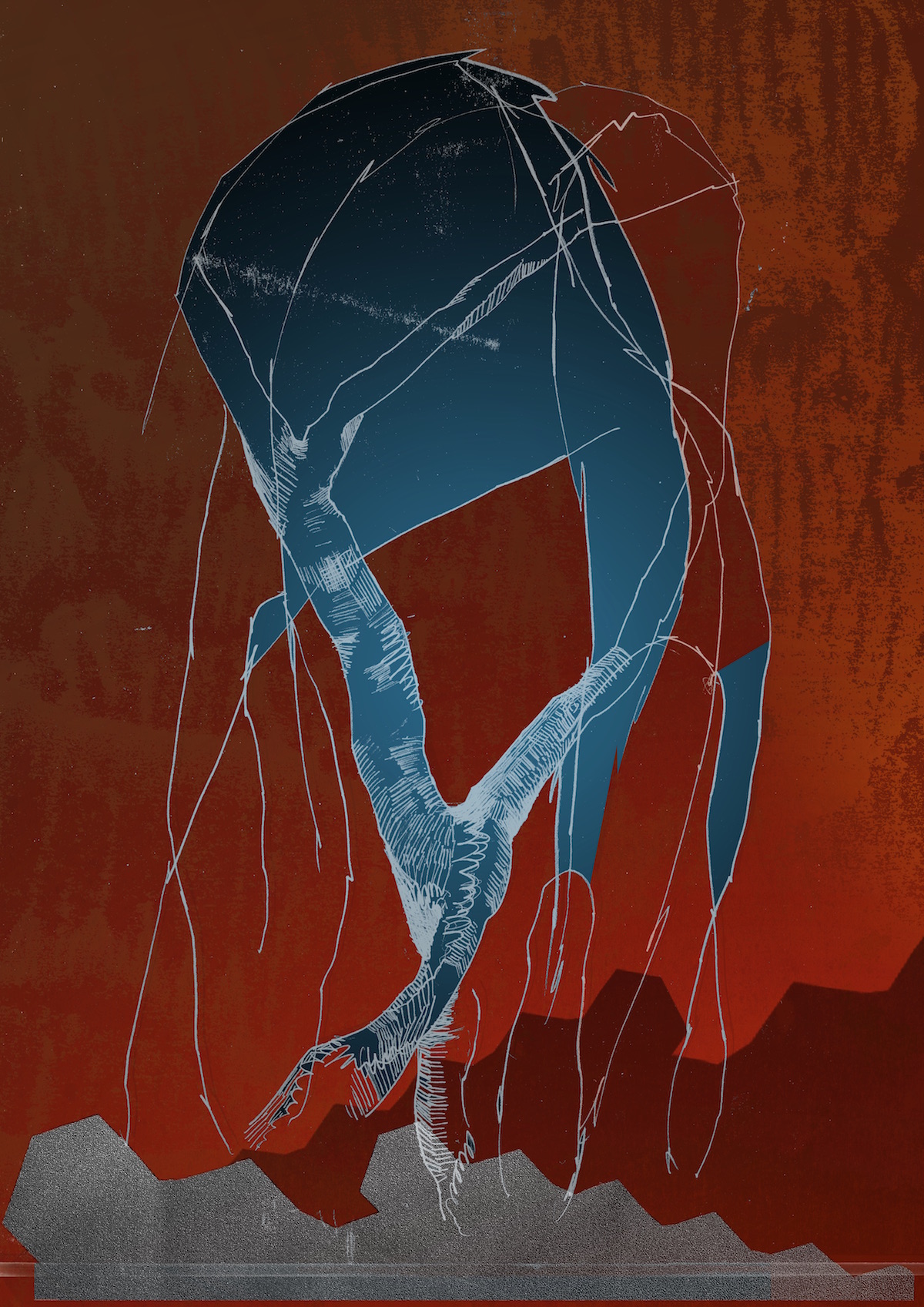
Aquarius.
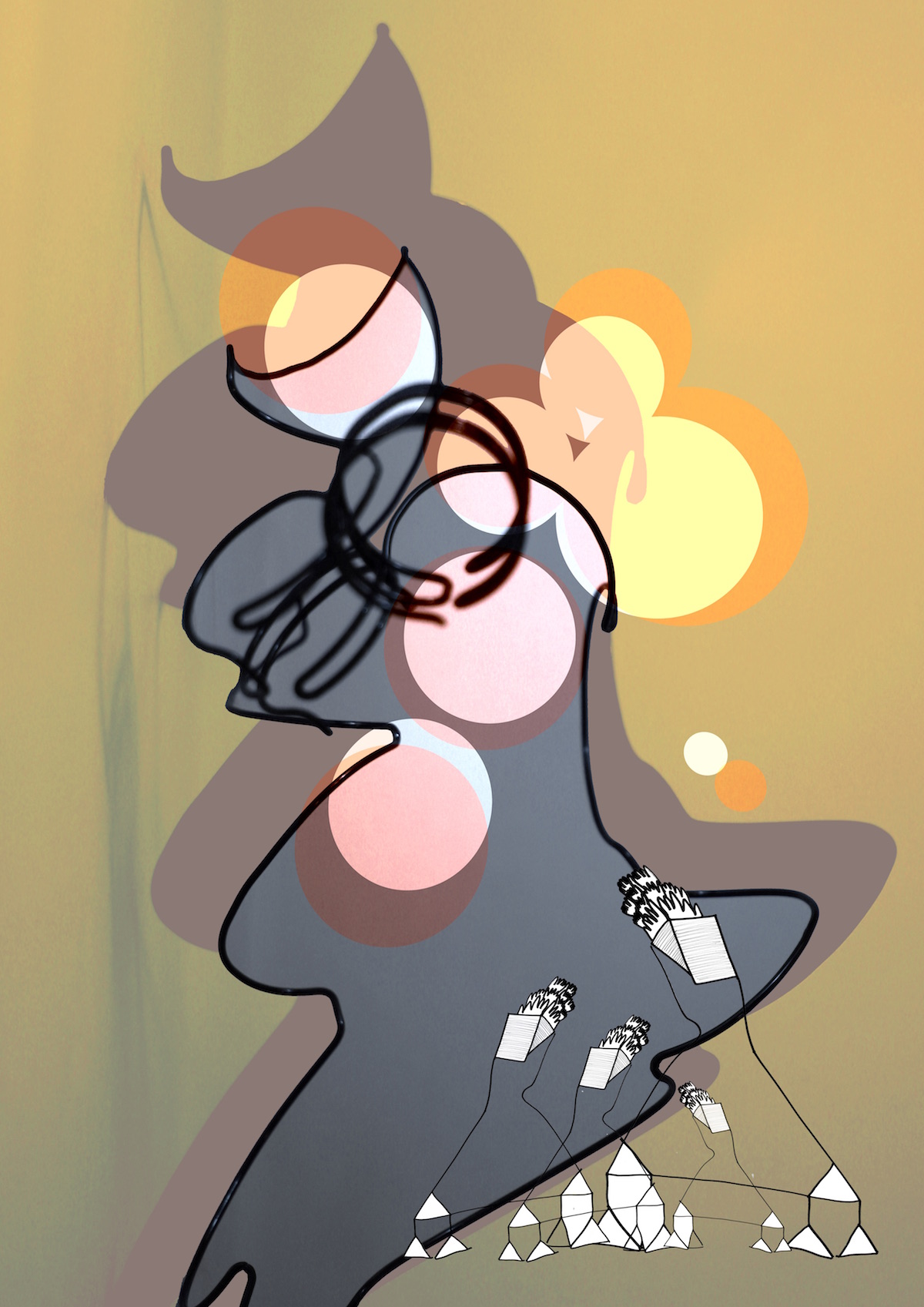
The Observable Universe.
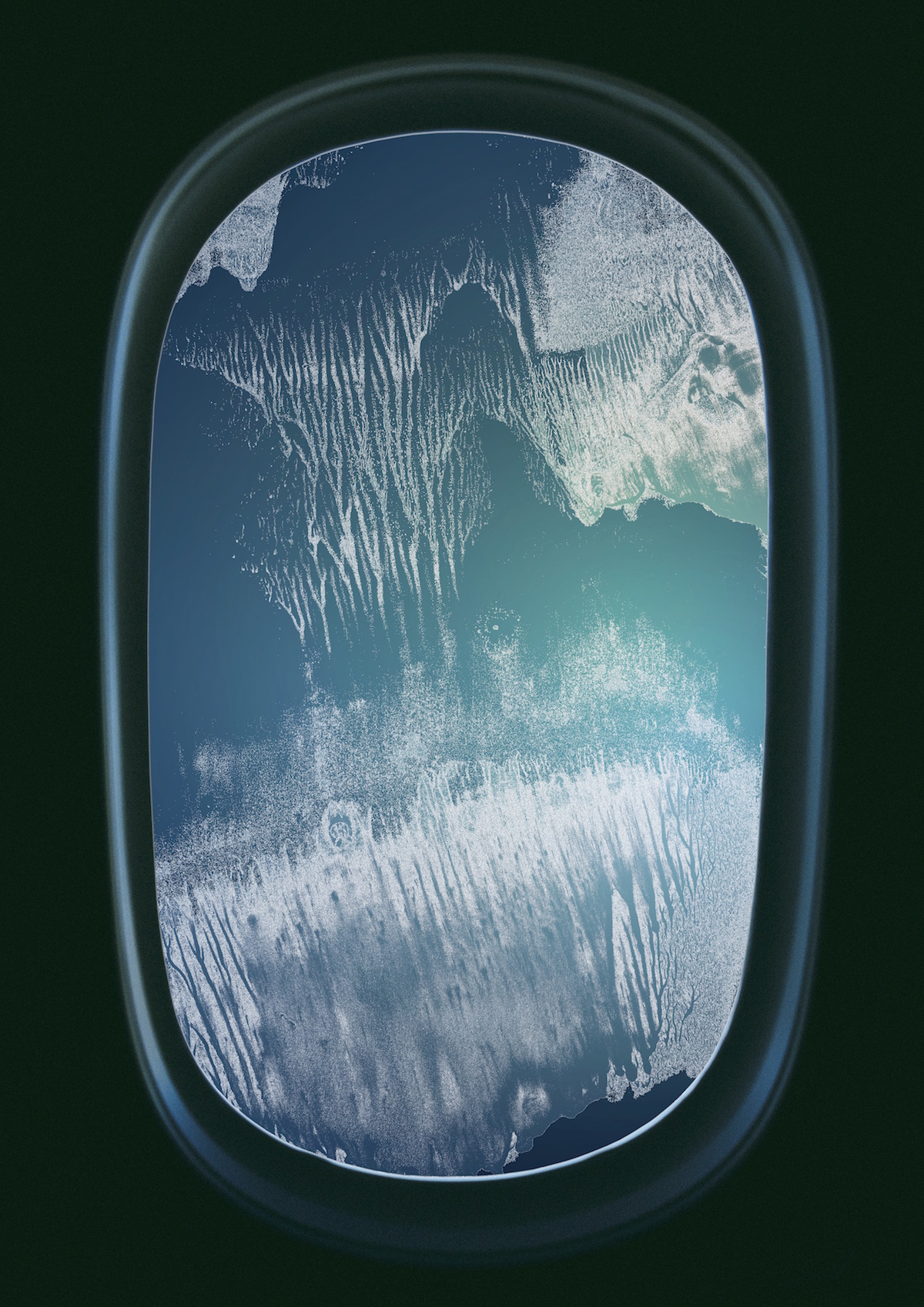
Please Remain Seated.
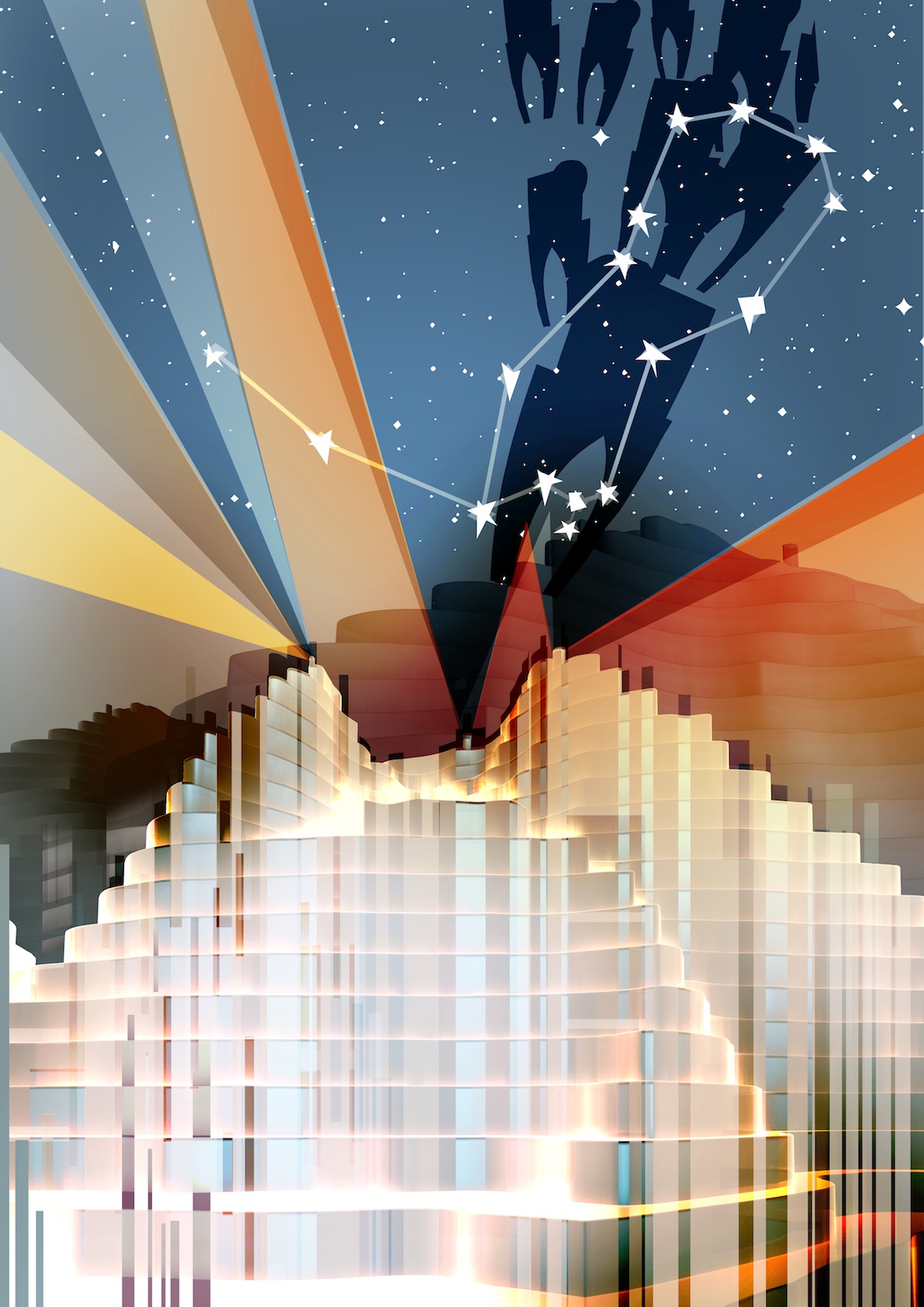
A Shared Experience.
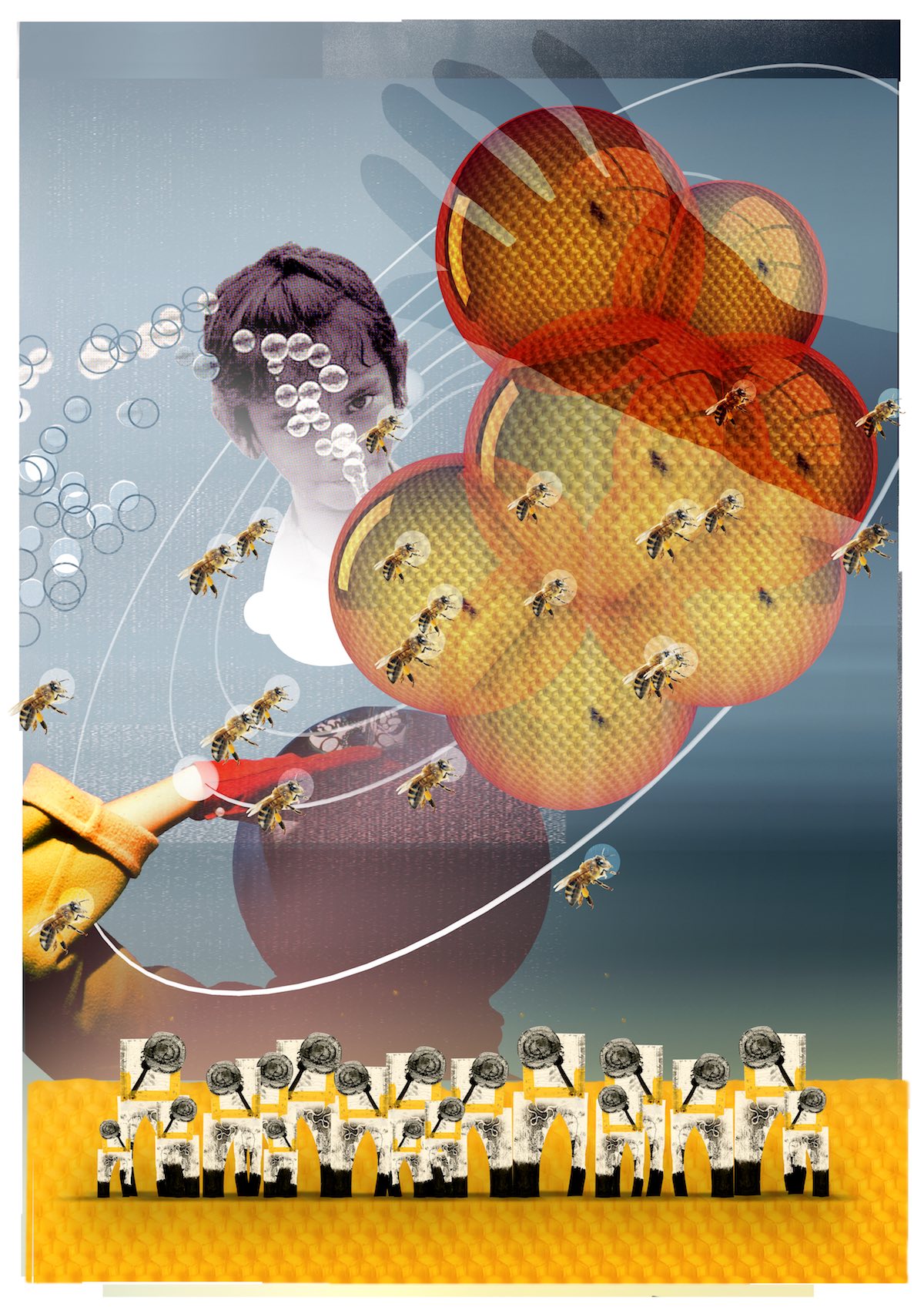
Airspace.
Infographics on TRAPPIST-1. Those posters display several of the quantities of the TRAPPIST-1 system against each other and
and against the Solar system.
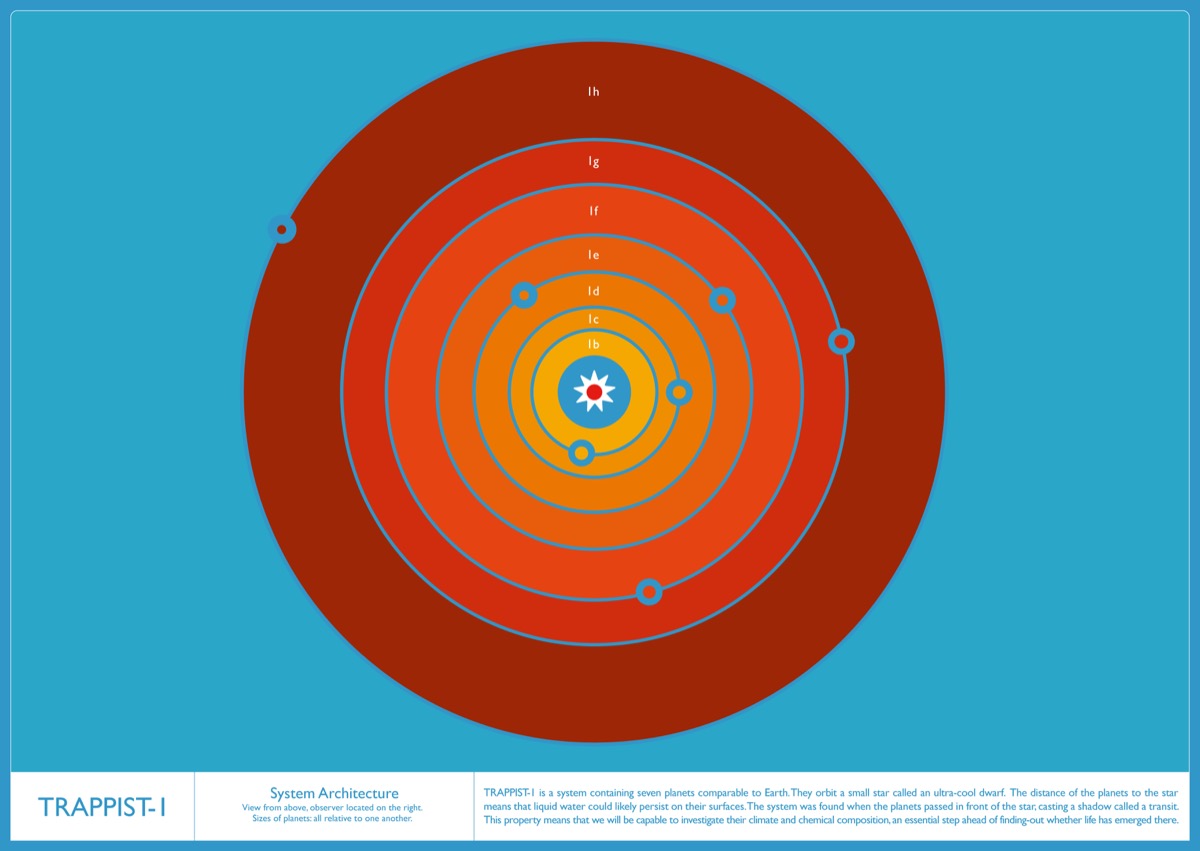
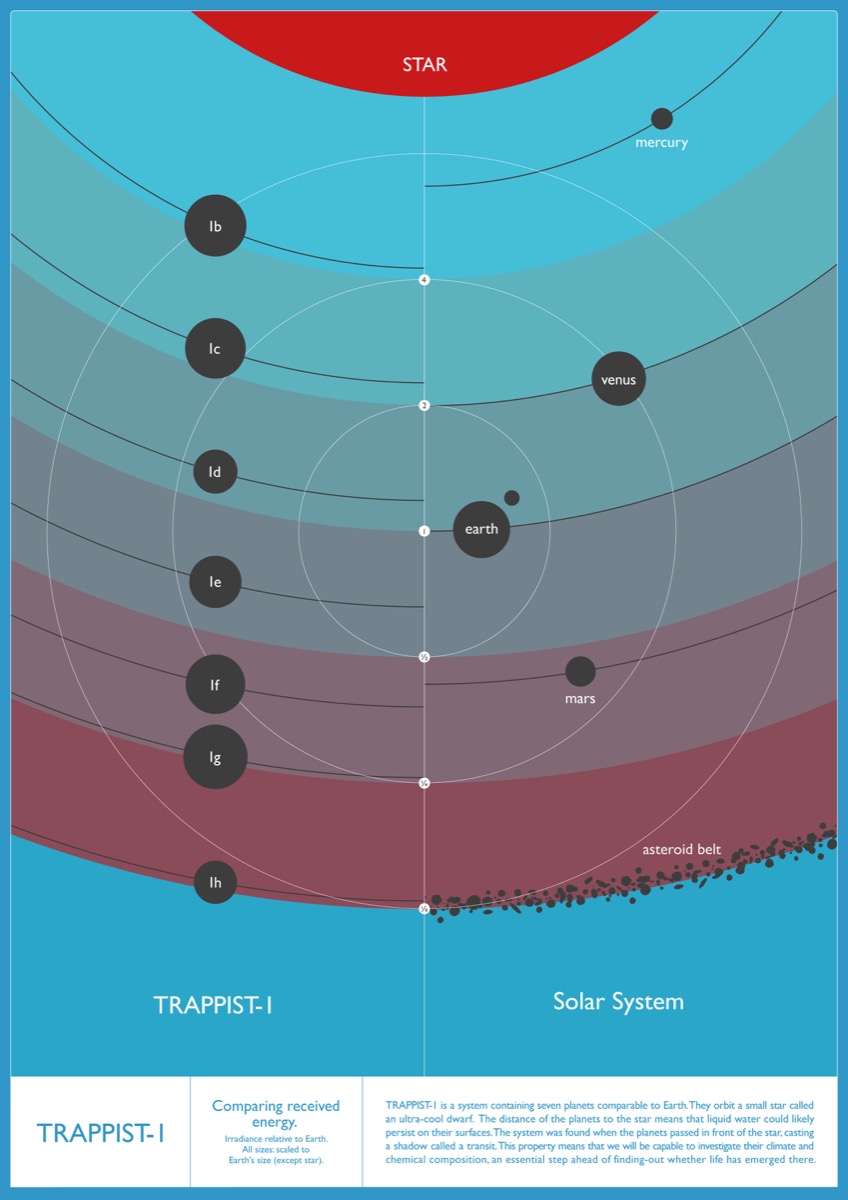
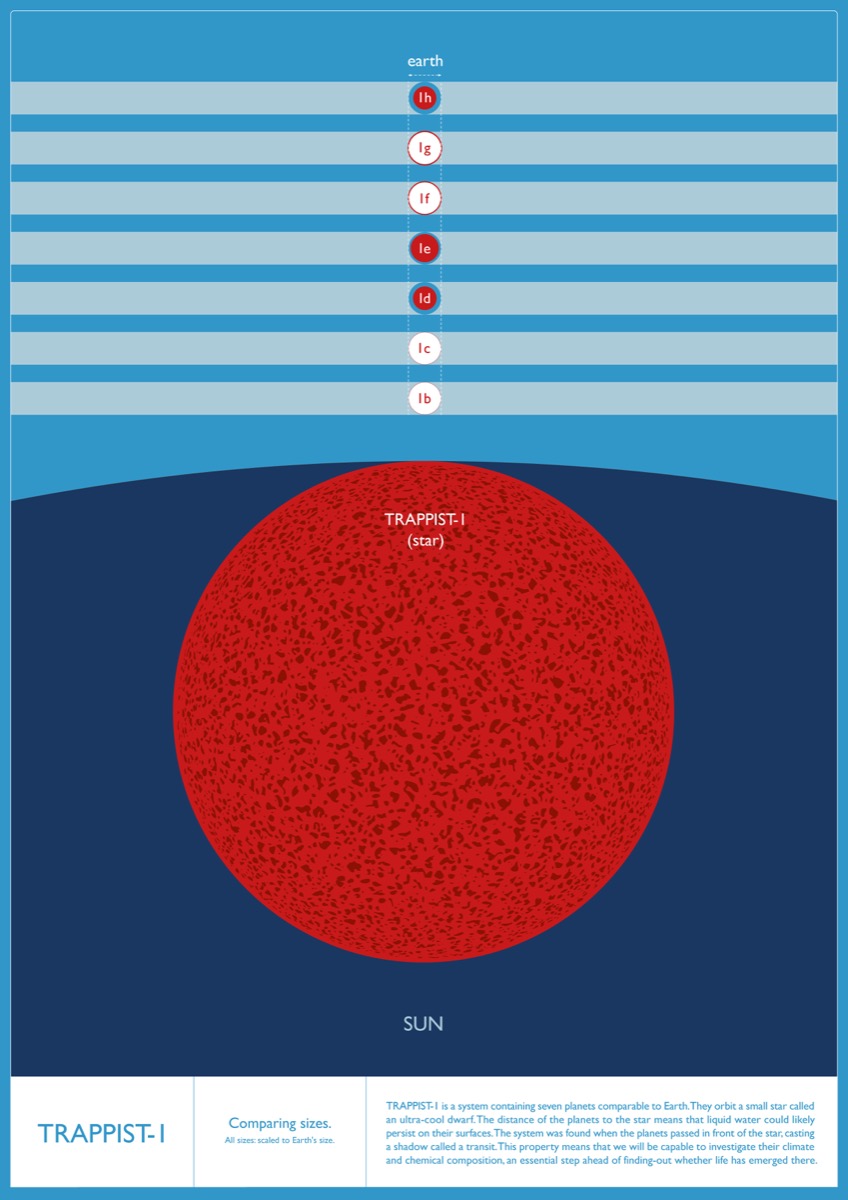
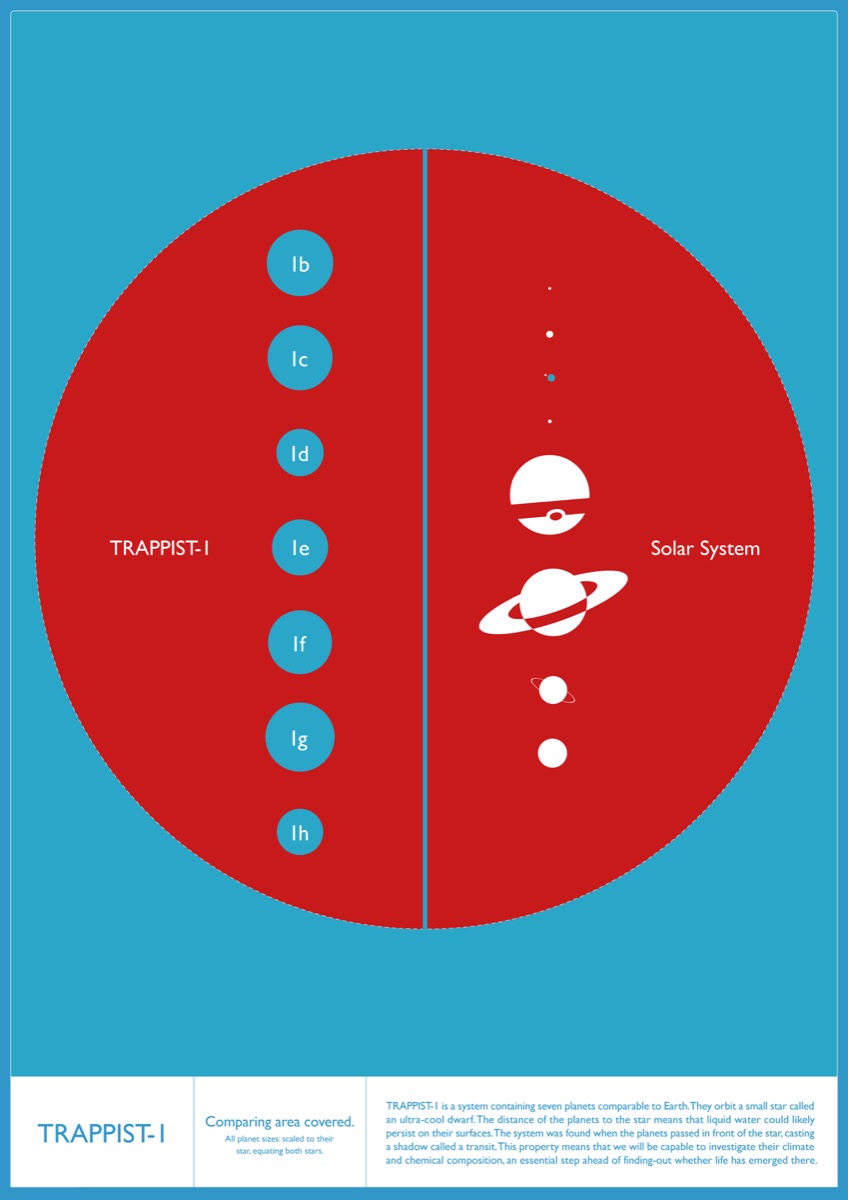
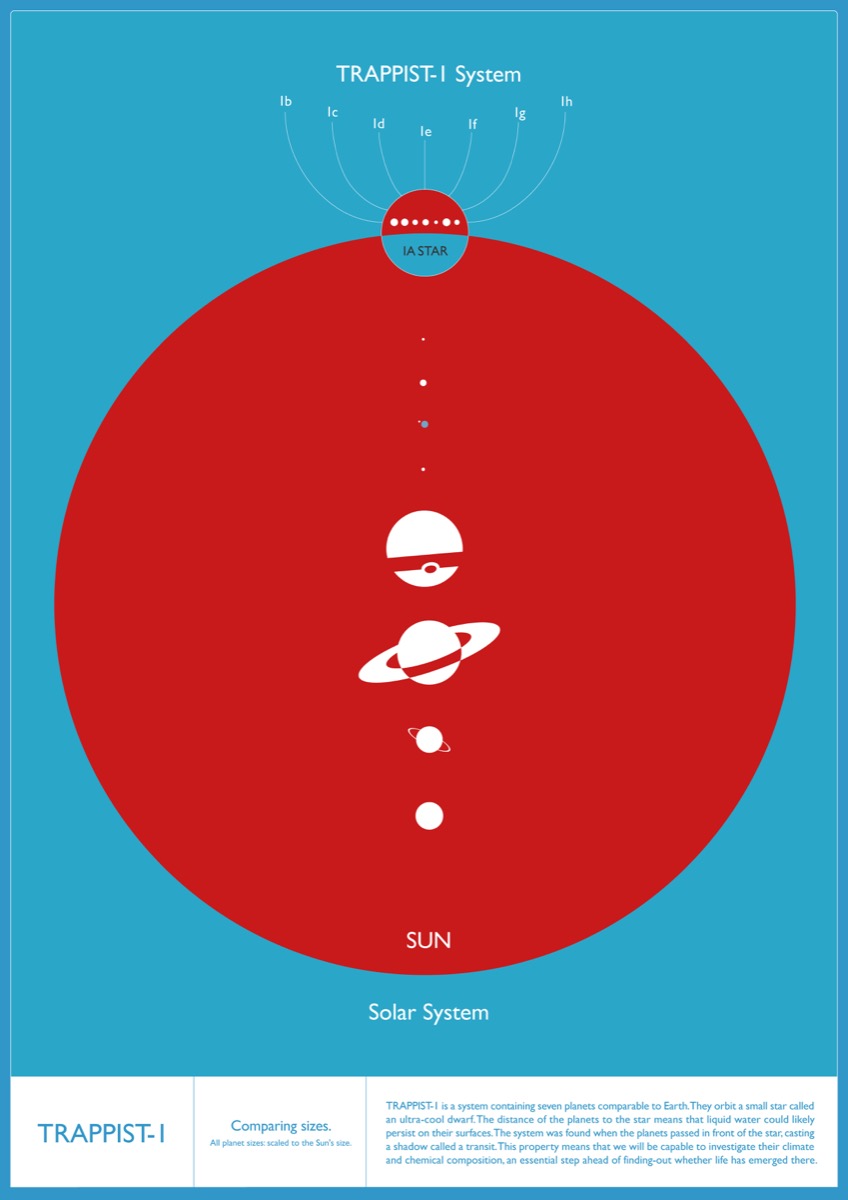
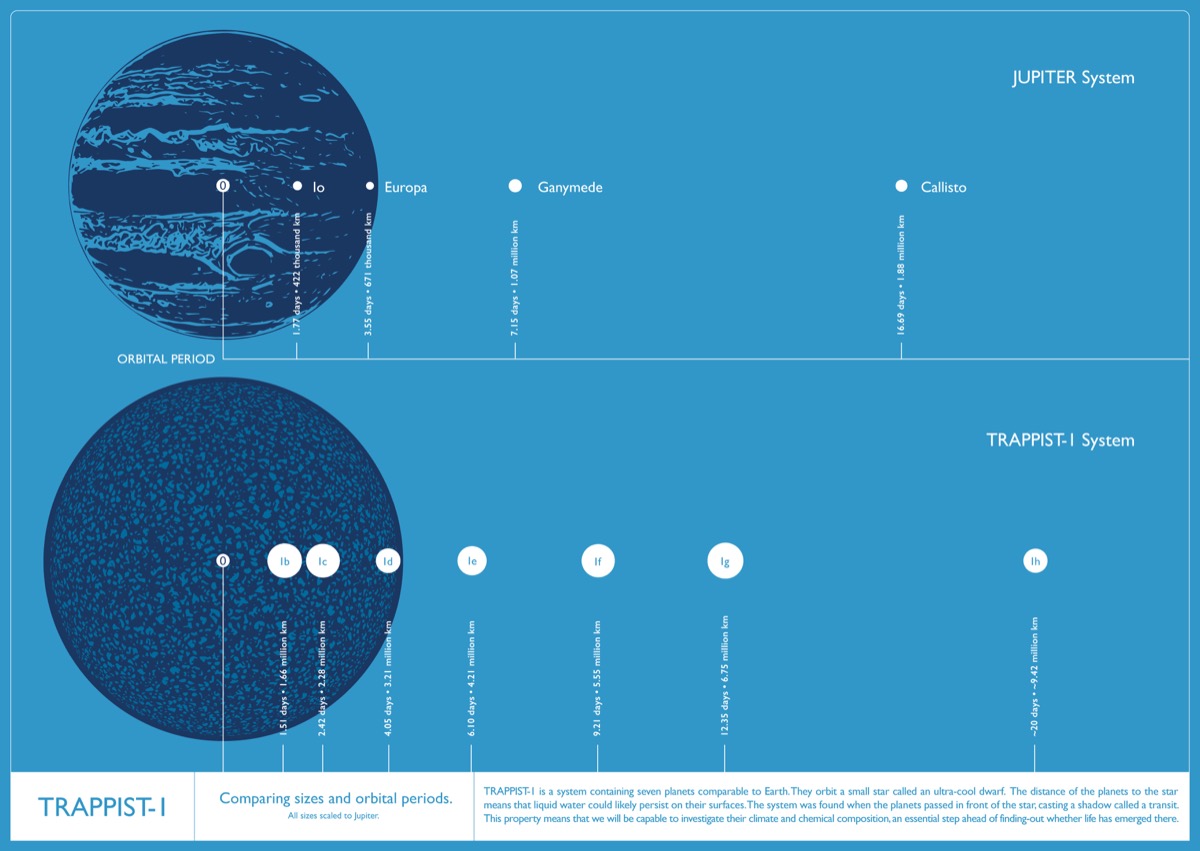
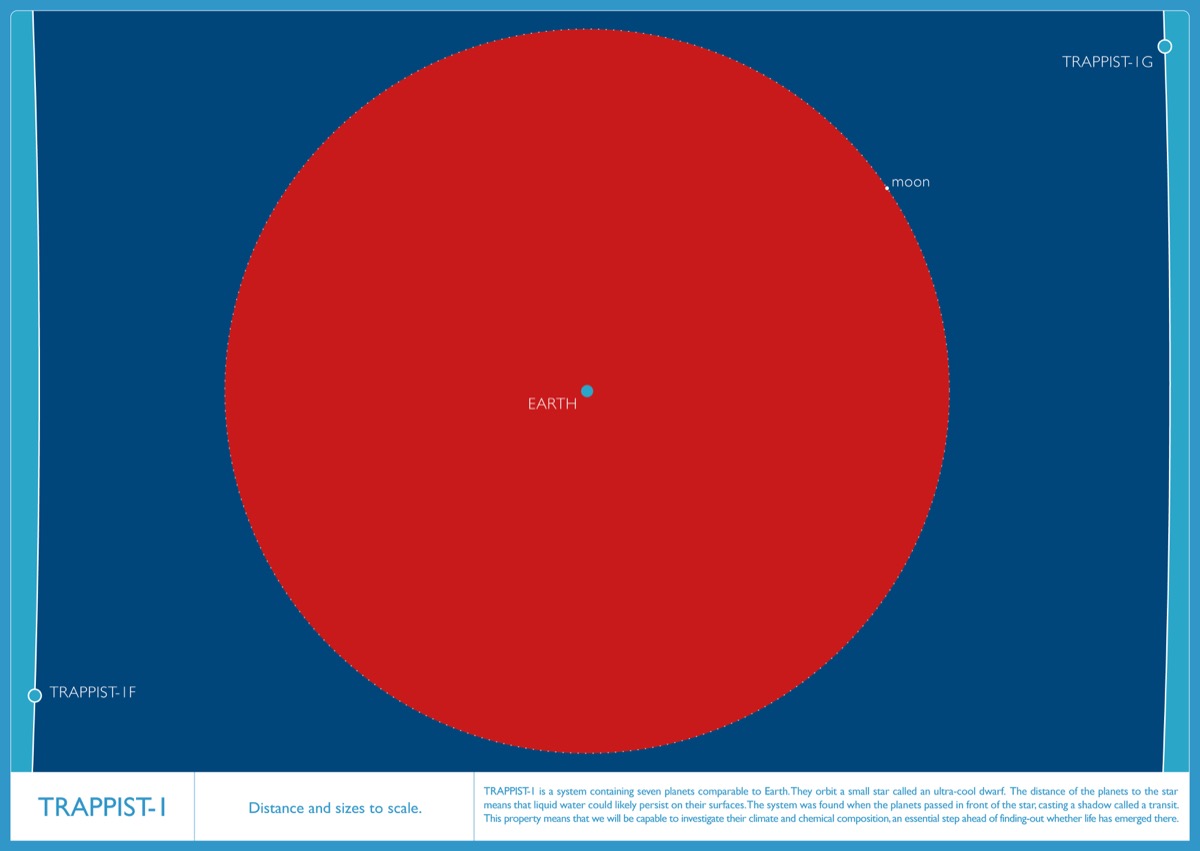
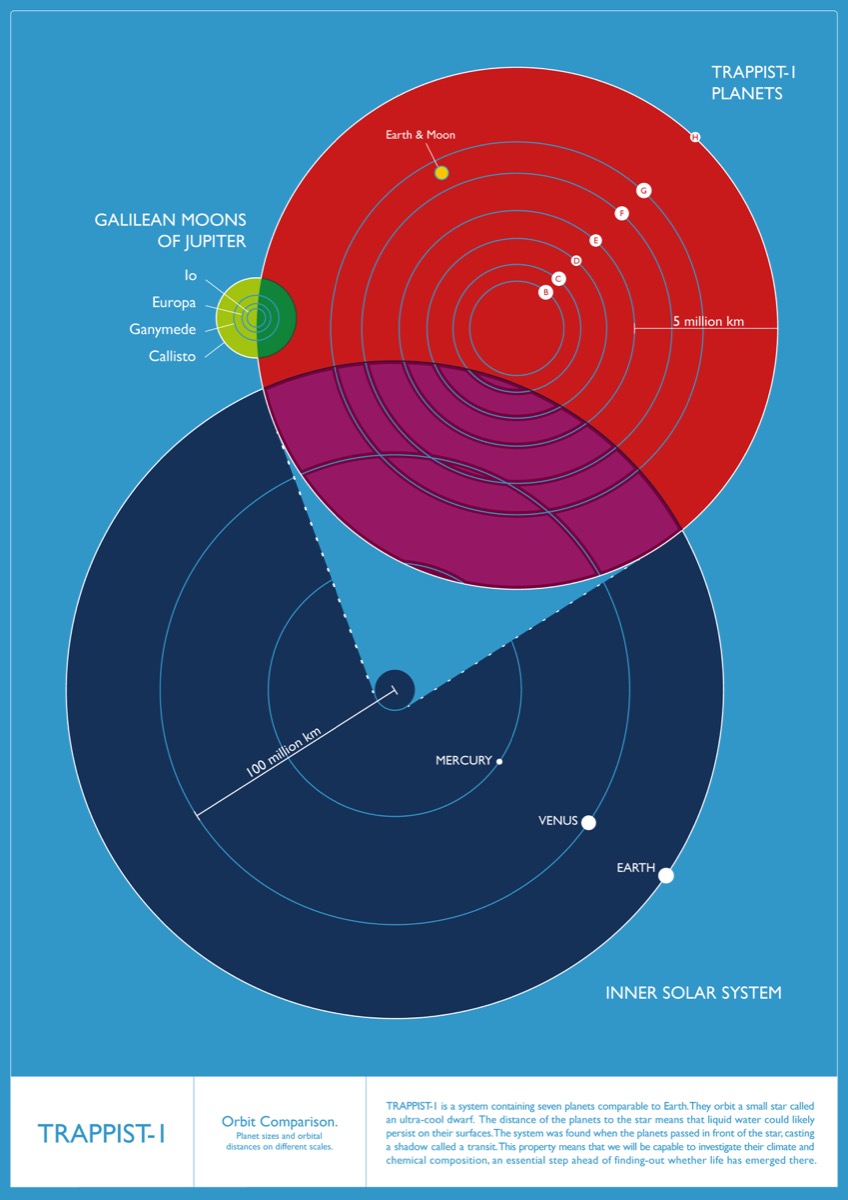
all images credits: IoA/Amanda Smith.
Under Creative Commons Licence. Reproduction allowed, but not for commercial activities.
NASA
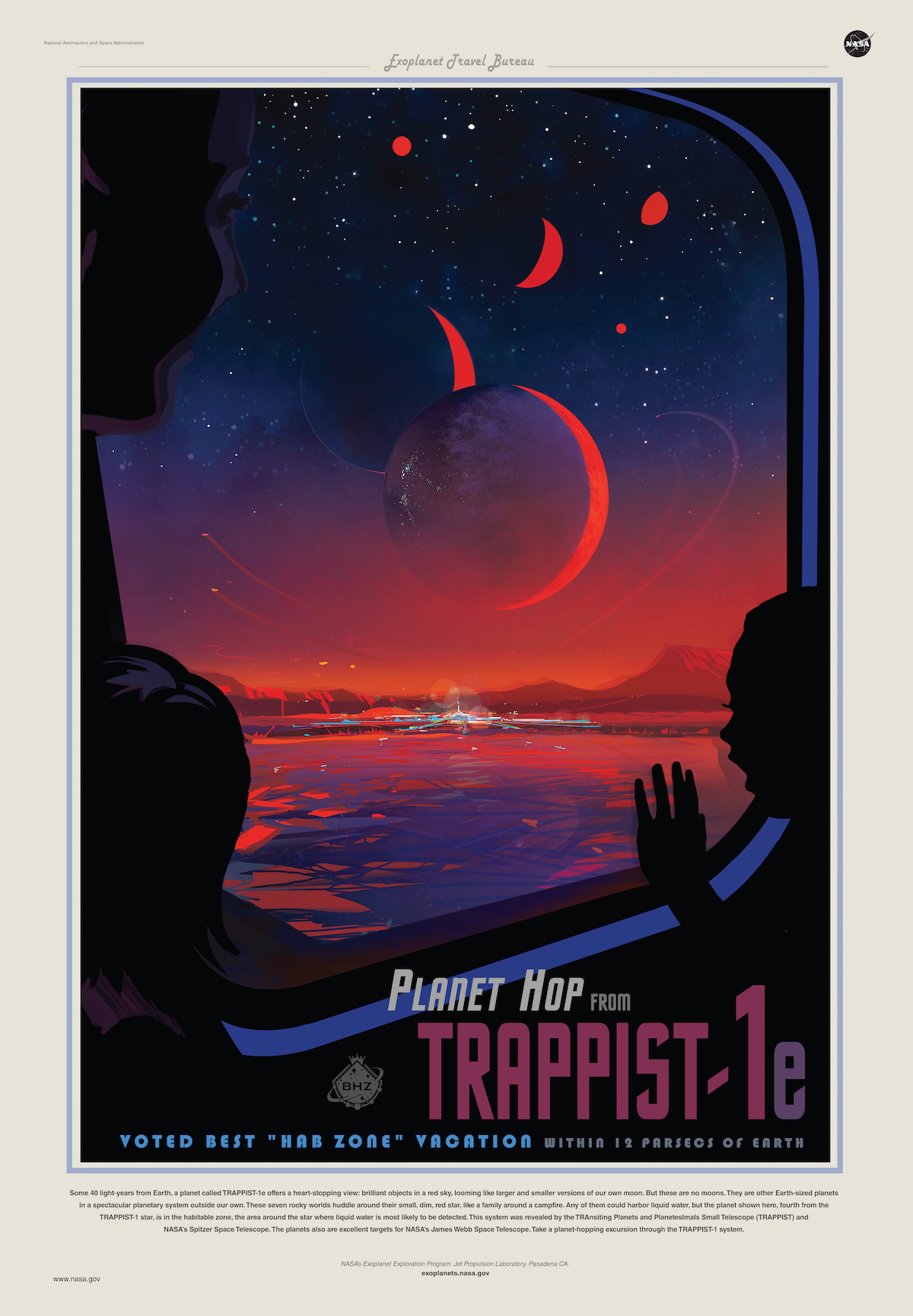
Check-out other posters from NASA/JPL's Exoplanet Travel Bureau!
Marie-Jo Parron
Marie-Jo Parron's work concentrates on themes linked to astronomy and particle physics.
Through paintings, she shares her impression of recent scientific discoveries to the wider public.
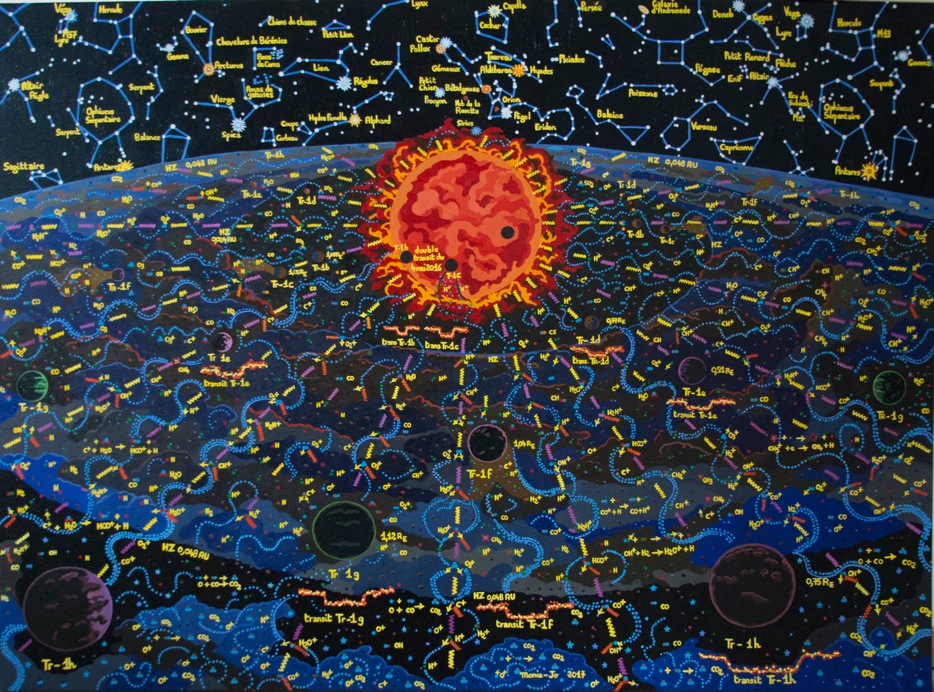
Entitled TRAPPIST-1 and Earth's seven cousins, Marie-Jo started to conceived her complex piece within a month's of TRAPPIST-1's discovery.
The piece is inspired by many of the several scientific publications that place TRAPPIST-1 and ultra-cool dwarfs at the centre of their considerations. As the viewer explores the piece, they will collect
much of the information we know of the system, such as the planets' radii, what the data to detect the planets looked like, the distances to the star, etc. In addition, several scientific themes
are depicted, such as the type of star, what a planetary transit looks like, the habitable zone and various chemical reactions. This work is an invitation to travel to TRAPPIST-1 to witness what it looked like while three
of its planets were transiting, an event that was captured at the VLT on 11 Dec 2015, while appreciating the range of phenomena needed to understand the system.
Videos
The videos proposed below were produced for the various press releases related to the TRAPPIST-1 system. Check ESO, and NASA for terms of use. Click on the images to view.
An interview of Michaël Gillon, leader of the TRAPPIST/SPECULOOS team.
A short video showing the steps taken, that eventually led to the identification of the TRAPPIST-1 system.
Made by Dan Fabrycky, this animation depicts the TRAPPIST-1 system during the K2 observations. It freezes every time two planets pass next to
each other and draws an arrow to the third, which we see is systematically on the opposite side of the star. This special configuration is how
TRAPPIST-1h was found, and is a reason for the long-term stability of the system.
scientific paper: Luger, R. et al. 2017, Nature Astronomy 1, 0129. html, bib
Two researchers from the University of Toronto put TRAPPIST-1 in music. They explain how the resonant nature of the orbits
helps stabilise the system for as long as can be computed, and also helps create musical harmony.
scientific paper: Tamayor, D. et al. 2017, Astrophysical Journal Letters 840, p19. html, bib
Animation showing how to relate the data collected by the Spitzer Space Telescope
to the physical reality. This show how beautiful, clean and unambiguous the detection for the planets is.
Video produced by NASA explaining how the system was identified, and why it was to chose to be observed by the
Spitzer Space Telescope. The video also describes what know and don't know about
the system and what we could hope to detect in the future.
The TRAPPIST-1 planets have orbital periods that are simple fractions of each others. This means that they are almost synchronised with one another (or, in scientific jargon, near commensurabilities).
This disposition is handy since it allows us to measure their masses, from their relative interactions. The closer to commensurability, the more likely the planets are in resonance, which amplifies their interactions.
The synchronisation of the orbits means that, on a short length of time, the pattern of transits remains very similar; a repeated pattern means we have rhythm, and therefore music. TRAPPIST-1 has a tune!
scientific paper: Gillon, M. et al. 2017, Nature 542, p456. html, pdf, bib
This is a rapid description of the TRAPPIST-1 system and the importance of its seven planets in the search for life in the Universe.
This is a more extensive description of the TRAPPIST-1 system, of the central star and its seven planets. There ESO describe how the system was discovered and the observations
that following, demonstrating a rich system filled with planets with sizes and masses similar to the Earth.
scientific paper: Gillon, M. et al. 2017, Nature 542, p456. html, pdf, bib
This video relates the results of observations obtained with the Hubble Space Telescope.
It gathered data while TRAPPIST-1b and TRAPPIST-1c transited the star together. This configuration permitted to rapidly
acquire information about the atmospheres of the two planets: they do not contain Hydrogen or Helium. This established
that the planets were more like Earth-like than mini gas-giants.
scientific paper: de Wit, J. et al. 2016, Nature 537, p69. html, pdf, bib
Here, ESO describes how three planets were identified by the TRAPPIST telescope, and their particularity.
The two first planets, TRAPPIST-1b, and 1c had orbital periods that were determined, whereas for the third, TRAPPIST-1d,
a range of possible solutions were given. It was later found out that TRAPPIST-1f,
and Trappist-1g had been mistaken for a same object. A new TRAPPIST-1d has been found, see third press release.
scientific paper: Gillon, M. et al. 2016, Nature 533, p221. html, pdf, bib
Stories
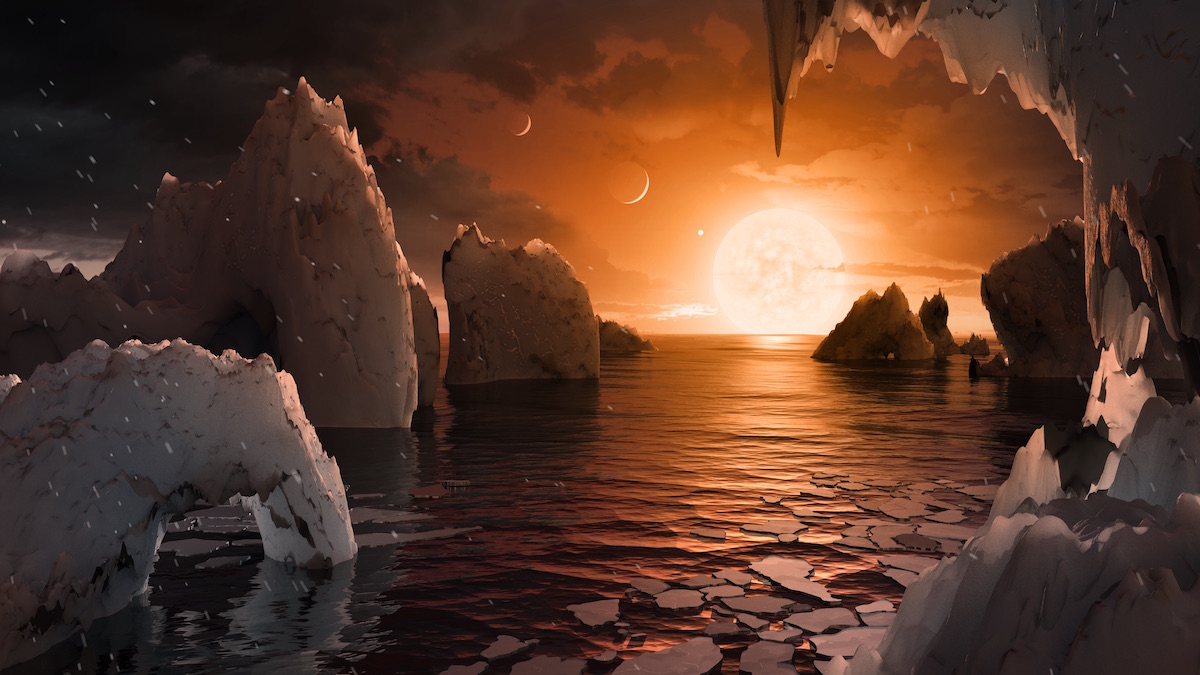
Music, visual art, literature and graphic novels freely inspired by the TRAPPIST-1 system.
As scientists, we thought that one way to communicate how excited we are about this new system, is to allow
artist to imagine what it would like there. Please enjoy these works keeping in mind that those are mostly works of fiction, written
with artistic licence!
The Terminator, a short-story by Laurence Suhner
TRAPPIST-1 (A Space Anthem), a single by In Isolation
Portals to Wonderland 2, a novel by Jean Young
Trappist-1, an album by Lucius Fox
Trappist-1, can you hear me?, a song by Majungas
La Oportunidad, a short-story by Adam Burgasser
Trappist-1, a musical and visual saga by Adam Łukawski & Julia Borzucka
TRAPPIST-1, what is it?, a graphic novel by Lepithec
An Ode to 7 Orbs, a poem by Sean Raymond
The Terminator
by Laurence Suhner © 2017
translated from French by Sheryl Curtis.
The full text can be publicly accessed on
Nature's
website. This short-story is currently a finlist to the Bob Morane prize, and eligible for the Hugo awards.
Laurence also wrote a piece describing the source of her inspiration, which can be read
here.
published in Nature, 542, p512 html
French version available here.
Version franÇaise ici.
TRAPPIST-1 (A Space Anthem)
This is Earth and I forsake it
Will the Earth cry when I’m gone?
Here on Earth, we war in isolation
Planet Earth has left me numb
I’m in love with TRAPPIST-1, though I’ll never see your sunrise
You tore imagination a new hole
I’m in love with TRAPPIST-1, but your children have a dark side
Got a Hippocratic conscience to uphold
Caught in calm, perpetual twilight
Forty light years seems so far
Do you feel the same? Because I cannot breathe
Distant loving breaks my heart
I’m in love with TRAPPIST-1, though I’ll never see your sunrise
You tore imagination a new hole
I’m in love with TRAPPIST-1, but your children have a dark side
Got a Hippocratic conscience to uphold
Aquarian sun, give me TRAPPIST-1
As the feeling burns and the dreaming yearns
Portals to Wonderland 2
Julia and Benjamin are back on another adventure through the Portal. This time, they travel to the TRAPPIST-1 star system (located 235 trillion miles from Earth) to save the astronauts from crashing into the forcefield around the star’s planets.
Who put up the force field around the planets in the first place? Julia and Benjamin must travel four hundred million years back into the past to solve the mystery and help two races of aliens from destroying each other. Will they succeed? What will they imagine from the magic pouch to help them on their quest?
Trappist-1
The album is an exploration of the seven planets orbiting TRAPPIST-1. Its opening and closing tracks are imagined as a flyby of the inner and outer planets respectively, while track 4 (TRAPPIST-1: e) explores the emergence of life on one of the planets within the habitable zone. The remaining four tracks are snapshots of the conditions present on on both the interior planets (Violet Horizon and Unsetting) and exterior planets (Fissures and Tidal Lock), due to the compact nature of the planets’ orbits and the tidal heating and tidal locking acting on each planet.
Trappist-1, can you hear me?
La Oportunidad
“Cuidate mi queridita” mamá whispers, the tangle of her grey hair scratching my chin.
She cries, as she has for weeks, since we got word that I would go to university.
“Cuidate…” she repeats, quietly; then pushes me back, points up and glares,
“Show those espacitos how smart you are.”
I smile, knowing she can’t see the star
I am going to, can’t see any stars in the airglow. Her fierceness falters. She turns to
papá. She knows. The 40 lightyears to T-1f, which I will experience as a single month,
is the rest of her life. I won’t see her again, nor papá, who stands proud and angry and
hurt. “You were to take care of us, you were to give us nietos” he said that night.
“You are leaving us to die alone on a tired world.”
He hasn’t spoken to me since. Same
with my friends. When I told Ana, she spit on me and deleted me from her net, she calls me
“la puta de las estrellas.” It is not jealousy; it is my betrayal. They will stay to harvest
the fuelgrass around the Stockton Sea; I will travel to the stars.
A knock.
A tall white man
in a slate uniform, face drawn. It is time to leave. Mateo lands a waist-high hug on me. “I’ll
follow you chola, to the stars.” But he can’t. He’ll be a middle-aged man when I reach T-1f. I
blink back tears and leave without saying anything.
Trappist-1
A collaborative effort Adam Łukawski (composer) & Julia Borzucka (visual artist) © 2017
click the image to access a video recording.
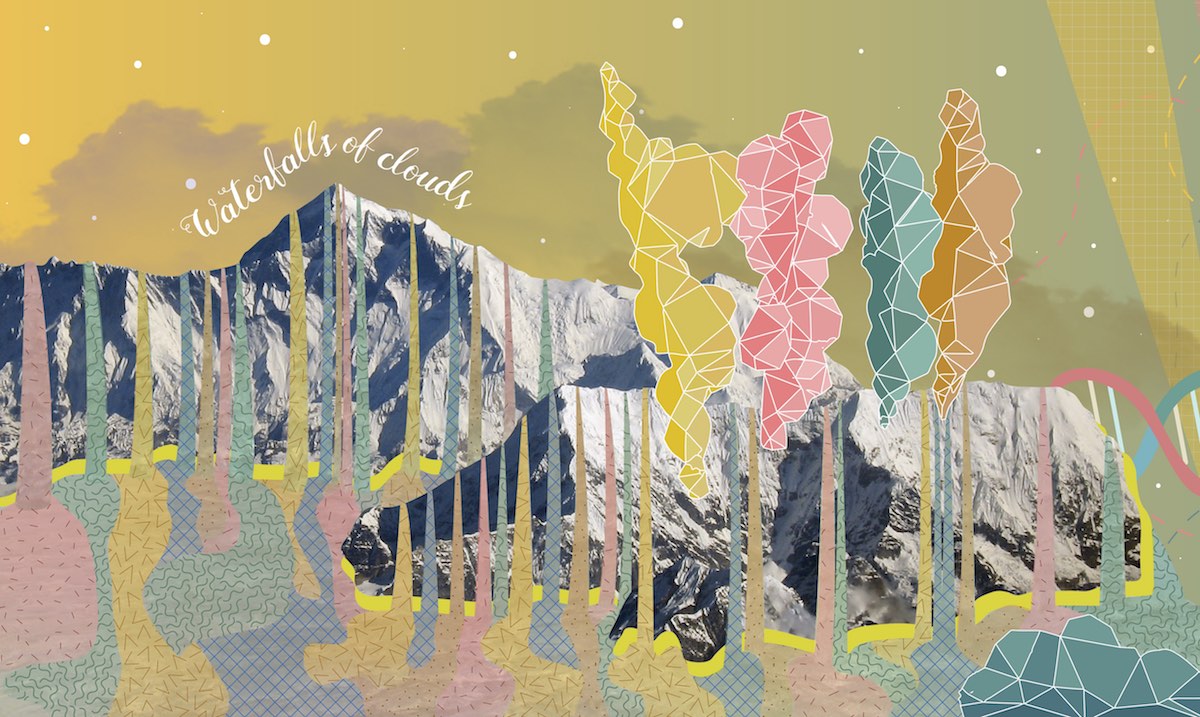
Their collaboration was established to convey an artistic greeting from homo-sapiens to the TRAPPIST-1 system and its putative
inhabitants. TRAPPIST-1, located in the Earth's vicinity becomes a symbol of a new era in our understanding of the Universe, namely
the hope that if there are millions of planets capable to host life, that on some of them life did indeed emerge, and that we are not alone in Space.
To illustrate how integrated the Universe can be in its complexity, the sound and the image complement each other and were produced as one integrated piece.
The enormous, 12m long graphic (accessible below) is a literal interpretation of the electronic score. It can be followed by the public from left to right,
from the beginning to the end, and was elaborated based on the pattern of the music.
There are seven short parts in the piece that, like in Egyptian hieroglyphs, present a story about the new system.

TRAPPIST-1, what is it?
Illustrated by Lepithec © 2017
From a text by Amaury Triaud. Colours by Mara
Versions exist in English (below), French,
Russian,
and Italian.
Released under Creative Commons Licence (see the end).







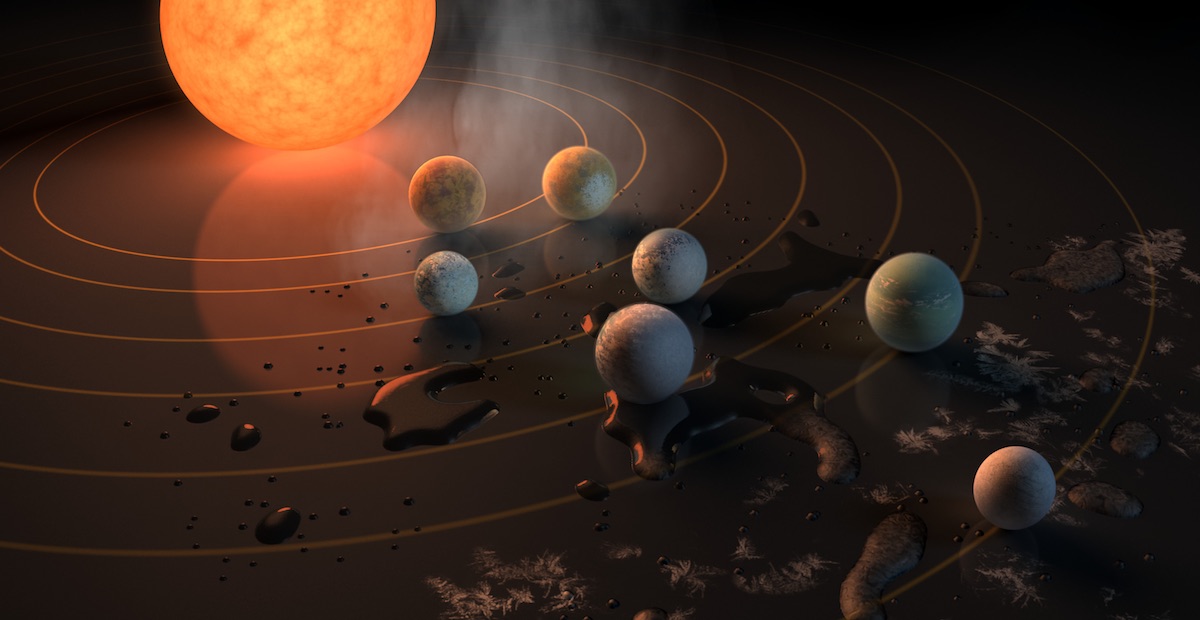
An Ode to 7 Orbs
Wake up now people, I’ve got some big news!
You won’t want to miss this. You don’t want to snooze.
We just found some planets while we were stargazing
Gather 'round, listen up. These ones are amazing!
And it’s not just one new planet. There are seven!
All orbiting one star up there in the heavens.
(Like in Spinal Tap this thing goes to eleven…)
The thing ‘bout this system that just makes us squeal,
All seven are Earth-sized. Now, that’s a big deal!
And four of those planets could have the conditions
For liquid water! (based on their positions).
“How did you find these new planets?” you ask
Well, let me first say it was no easy task
To start off, we made a long list of stars.
Then,
We measured their brightness again and again.
Most of the stars just looked awfully boring
They stayed the same brightness. They weren’t worth exploring.
The ones we were looking for had little blips
Their brightness stayed constant except for small dips
Each dip is a planet that, just as it passes
In front of the star, blocks some light from our glasses
The brightness we measure goes blip every time
The planet goes once around. Then it re-aligns.
(Another way that you can think of the dips:
Each blip is like a single tiny eclipse)
Armed with the star’s brightness, we measured and figured
How big are the planets and how they’re configured.
This new star with planets is called TRAPPIST-1
It’s not a star that is at all like the Sun
It’s much much much smaller, and also less hot
Two thousand times fainter. (Now that is a lot).
An “ultracool dwarf” star they call it. And hey,
It’s just about 40-odd light years away.
The planets have letters for names. Now, you see,
From outside to in it’s h, g, f, e, d,
And, yes, as you guessed, after that, c and b
(The first one’s called b. There is no planet a.
The “a” is reserved for the star, by the way).
All seven planets are close to their star.
They orbit real fast since they’re not very far
Planet b’s year: one and a half Earth days.
If you lived there you’d have all sorts of birthdays!
Stand on a planet in the TRAPPIST-1 system
The planets you’d see in the sky – you can’t miss ‘em!
Their orbits are so close that they’d each appear
As big as the full Moon! Bigger when they’re near.
(Imagine the werewolf problem they must fear!)
The Sun in the sky would stay in the same place.
The planets’ always show the star the same face
The planets would shift and sometimes look like crescents
Just a peek of that’s sky’s like an antidepressant!
The two inner planets, planets b and c.
Are too hot for oceans. Water would be steam.
But the next four planets: d, e, f, and g
Are all at about the right place for a sea.
They could have liquid water, although
We don’t know if they even have H2 or O.
There’s plenty of planets out there that are dry
Just look at that big red dot up in Earth’s sky.
That’s Mars, it’s got water but only a trace
And Venus, of course, is a hot hot dry place.
The planets’ orbits were not set by chance
They seem to be following a cool cosmic dance
Take for example planets d and e
When e completes two orbits, d has done three.
They meet up again at the very same place
This orbital resonance is common in space.
Each pair of planets is in resonance. So,
It’s like the whole system is doing a tango!
We think that a resonant configuration
Is a signpost of the planets’ migration
That means that the planets’ orbits shifted
While they were forming, inward they drifted.
One last cool thing I really want to say-o
TRAPPIST-1’s actually linked with Galileo!
He discovered Jupiter’s four big old moons
That you can see with good binoculars too.
The TRAPPIST-1’s planets are much farther out
But take about the same time to go around.
Now let’s wrap up with a ditty for later
It’s written for you if you’re a planet hater
“Planets”, you say, “no big deal. There’s a zillion.
Eight in our Solar System and a billion
In orbit around other stars in the sky
Why should I care about this one little guy?”
I’d answer your question with a look back at history
Discovering new planets may help solve a big mystery.
Are we all alone? Is there other smart life?
(Do I have an alien doppelganger and wife?)
How can we answer this key age-old question?
It’s not at all simple. But here’s a suggestion
Any life out there will need its own planet
Maybe with oceans or ice caps or granite.
We now have the telescopes, tools and techniques
To find other planets and take a sneak peak
To try to find out if the Earth is unique.
Contact
Elements
Text
This is bold and this is strong. This is italic and this is emphasized.
This is superscript text and this is subscript text.
This is underlined and this is code: for (;;) { ... }. Finally, this is a link.
Heading Level 2
Heading Level 3
Heading Level 4
Heading Level 5
Heading Level 6
Blockquote
Fringilla nisl. Donec accumsan interdum nisi, quis tincidunt felis sagittis eget tempus euismod. Vestibulum ante ipsum primis in faucibus vestibulum. Blandit adipiscing eu felis iaculis volutpat ac adipiscing accumsan faucibus. Vestibulum ante ipsum primis in faucibus lorem ipsum dolor sit amet nullam adipiscing eu felis.
Preformatted
i = 0;
while (!deck.isInOrder()) {
print 'Iteration ' + i;
deck.shuffle();
i++;
}
print 'It took ' + i + ' iterations to sort the deck.';
Lists
Unordered
- Dolor pulvinar etiam.
- Sagittis adipiscing.
- Felis enim feugiat.
Alternate
- Dolor pulvinar etiam.
- Sagittis adipiscing.
- Felis enim feugiat.
Ordered
- Dolor pulvinar etiam.
- Etiam vel felis viverra.
- Felis enim feugiat.
- Dolor pulvinar etiam.
- Etiam vel felis lorem.
- Felis enim et feugiat.
Icons
Actions
Table
Default
| Name |
Description |
Price |
| Item One |
Ante turpis integer aliquet porttitor. |
29.99 |
| Item Two |
Vis ac commodo adipiscing arcu aliquet. |
19.99 |
| Item Three |
Morbi faucibus arcu accumsan lorem. |
29.99 |
| Item Four |
Vitae integer tempus condimentum. |
19.99 |
| Item Five |
Ante turpis integer aliquet porttitor. |
29.99 |
|
100.00 |
Alternate
| Name |
Description |
Price |
| Item One |
Ante turpis integer aliquet porttitor. |
29.99 |
| Item Two |
Vis ac commodo adipiscing arcu aliquet. |
19.99 |
| Item Three |
Morbi faucibus arcu accumsan lorem. |
29.99 |
| Item Four |
Vitae integer tempus condimentum. |
19.99 |
| Item Five |
Ante turpis integer aliquet porttitor. |
29.99 |
|
100.00 |
-->





